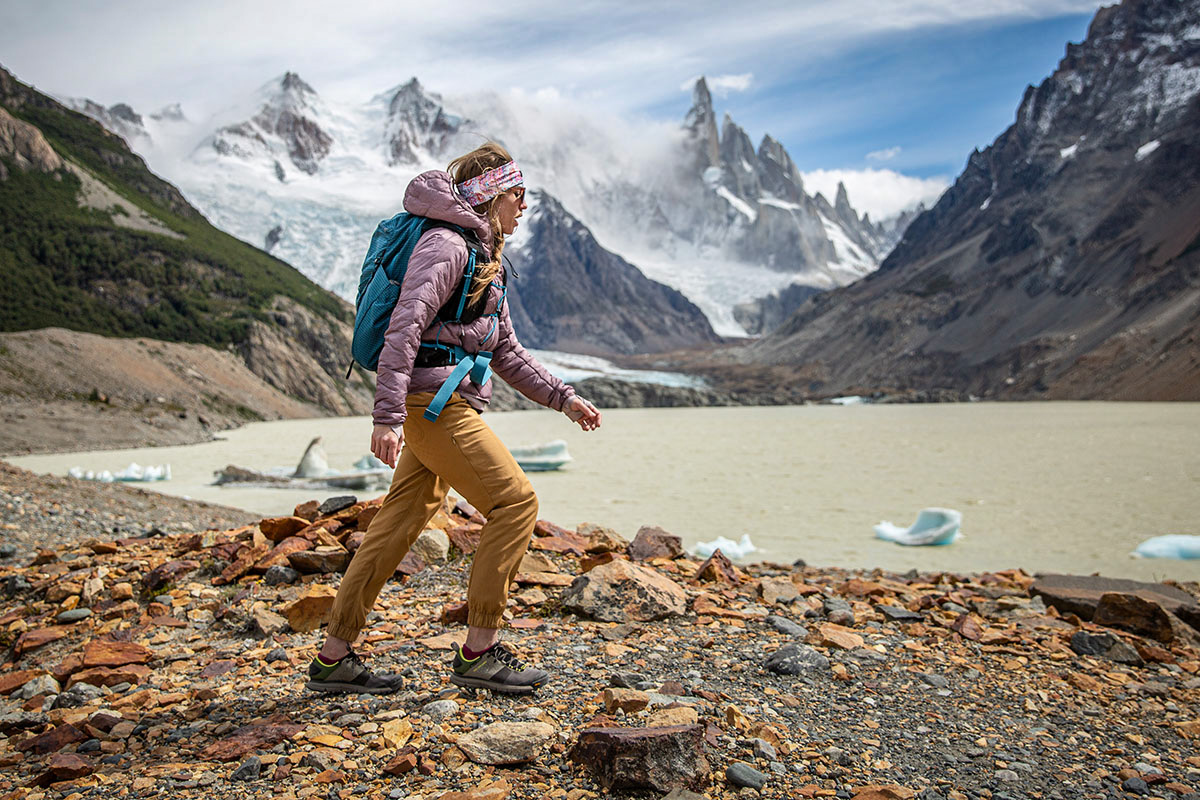
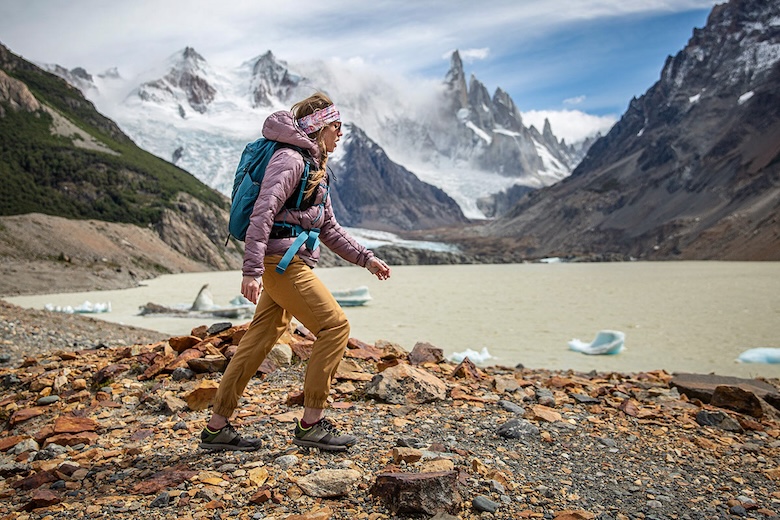
Synthetic insulation might not offer quite the warmth-to-weight ratio of down, but it resists moisture, breathes better, and is more cost-efficient. With the choice of both types of jackets in our gear closet, we find ourselves consistently reaching for synthetics for performance use, including alpine climbing, ski touring, and wet-weather hiking and backpacking. We've been testing these capable pieces since 2015, and below are our top 16 picks for the best synthetic insulated jackets of 2025, including casual offerings, minimalist down-mimicking designs, and active insulators built for breathability. For more background information, see our comparison table and buying advice below the picks. Of note: This article includes picks for both men and women, but we’ve also written a dedicated round-up on the best women’s synthetic jackets.
Editor's note: We updated this guide on July 29 2025, to remove the unavailable L.L. Bean PrimaLoft Packaway Jacket and The North Face ThermoBall Eco Jacket, add the Black Diamond Solution 2.0 Jacket, and comb through the guide to ensure all information was current at the time of publishing.
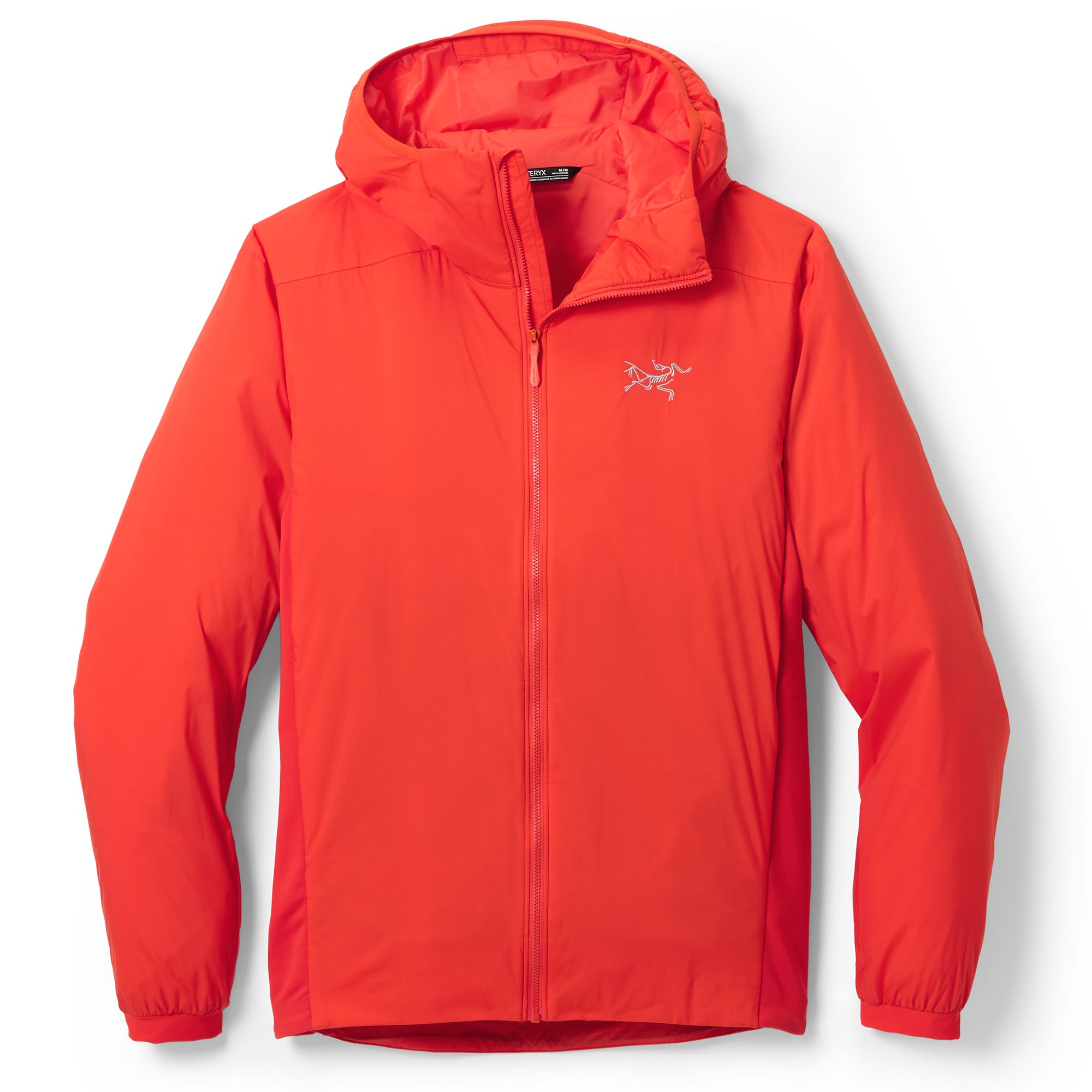 Weight: 12.5 oz. (men's), 11.3 oz. (women's)
Weight: 12.5 oz. (men's), 11.3 oz. (women's)
Insulation: Coreloft Compact (60g)
What we like: Great mix of warmth, mobility, and comfort.
What we don’t: Breathability could be better.
Arc’teryx makes some of the top jackets and shells on the market, and the Atom Hoody (previously called the Atom LT Hoody) is perhaps their most well-known model. This synthetic jacket absolutely nails the essentials: You get impressive warmth for the weight, supreme comfort, a useful feature set—including an adjustable insulated hood and stretch-knit cuffs—and a sleek design. Unlike Patagonia's Nano-Air below, which has a softer shell and interior fabric, the Atom is tough and shows less wear over time. And with a just-right fit and articulated patterning that boosts mobility, it works great both as an outer layer or midlayer.
We’ve worn the Atom during all kinds of outdoor activities, from hiking and biking to cross-country skiing, so how does it compare? The Atom isn’t quite as breathable as jackets like The North Face Casaval Hybrid below, but the Coreloft Compact insulation and stretchy fleece side panels still work well for active use. On the other hand, it can't match the light weight and packability of the down-mimicking pieces here, but we still don't hesitate to bring it along on most backcountry outings. Most of all, we love the versatility: The Atom is no slouch when it comes to performance, but it’s also one of the best options on this list for everyday wear.
Read more: Arc'teryx Atom Hoody review (men's version)
See the Men's Arc'teryx Atom Hoody See the Women's Arc'teryx Atom Hoody
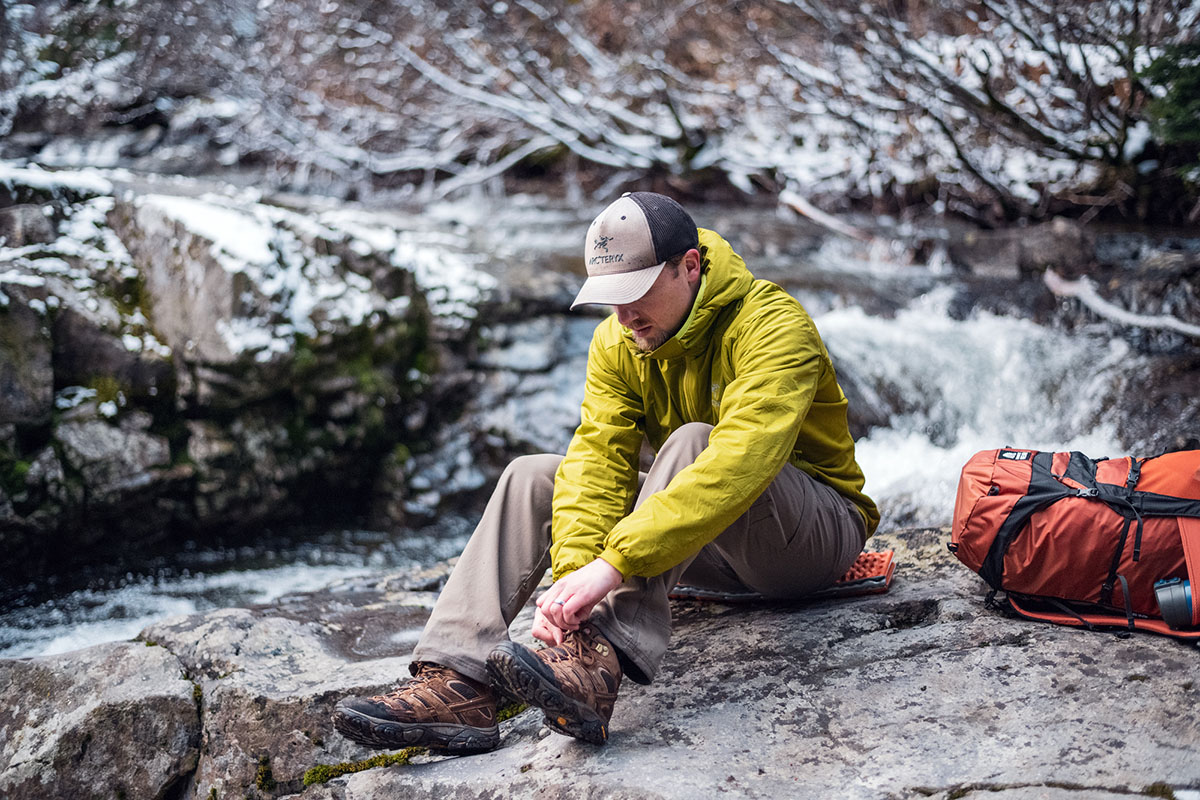
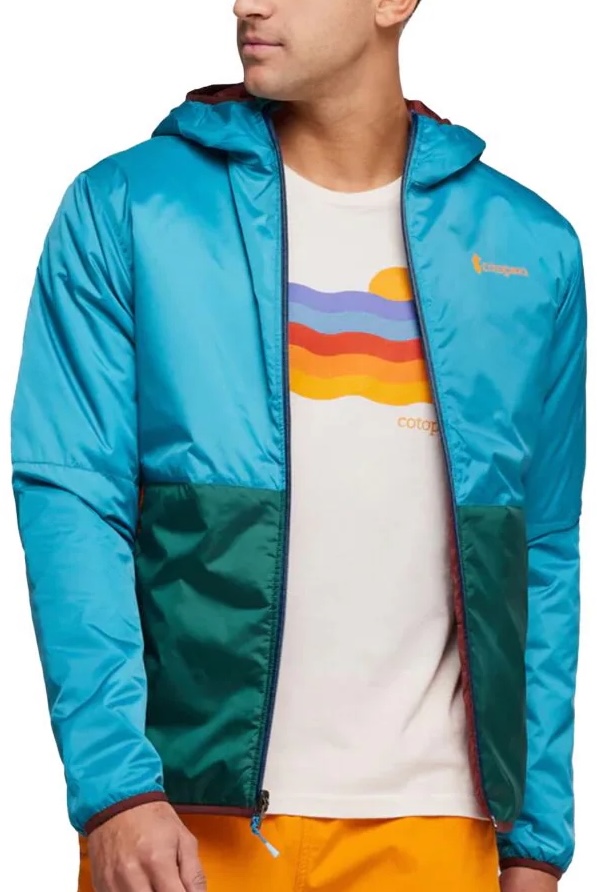 Weight: 12.7 oz. (men's), 13.0 oz. (women's)
Weight: 12.7 oz. (men's), 13.0 oz. (women's)
Insulation: Recycled polyester (60g)
What we like: Retro styling, reversible design, and great value.
What we don’t: Other jackets are lighter, warmer, and more breathable.
Based in Salt Lake City, Cotopaxi is a relatively new brand that has quickly risen to popularity in the outdoor world thanks to their sustainable business practices, positive community presence, and—of course—hard-to-miss colorways. Their Teca Cálido Hooded is a case in point: The jacket features a recycled shell, insulation, and lining, and its vibrant color blocking and classy fit and finish make it fun to wear both in the mountains and around town. What’s more, it’s reversible, with a solid interior that showcases retro styling and cool dump pockets, reminiscent of puffer jackets of yore. As with most of their offerings, Cotopaxi did something a little different with the Teca Cálido, and we really like the result.
We tested the Teca Cálido throughout a mild winter, and it became our go-to jacket for daily use. You don’t get a breathable, stretchy shell like the TNF Casaval Hybrid below, and the Teca certainly doesn’t compete with the Micro Puff (also below) in terms of warmth for weight, but it’s hard to beat for casual use. And if you do choose to test its limits in the backcountry (we did), the Teca Cálido holds up fairly well, with a lightweight and packable build (the jacket stuffs into its chest pocket), relatively durable shell, and gentle elastic bindings on the hem, cuffs, and hood that seal in warmth. It's also surprisingly water-resistant with a solid DWR coating. All told, the Cotopaxi is not the most high-performance jacket here, but it’s a very versatile pick for everyday wear and a great value. Note: This jacket is on its way out, so grab one at a discount while you can. We're in the process of deciding on a new pick for a budget offering.
See the Men's Cotopaxi Teca Cálido See the Women's Cotopaxi Teca Cálido

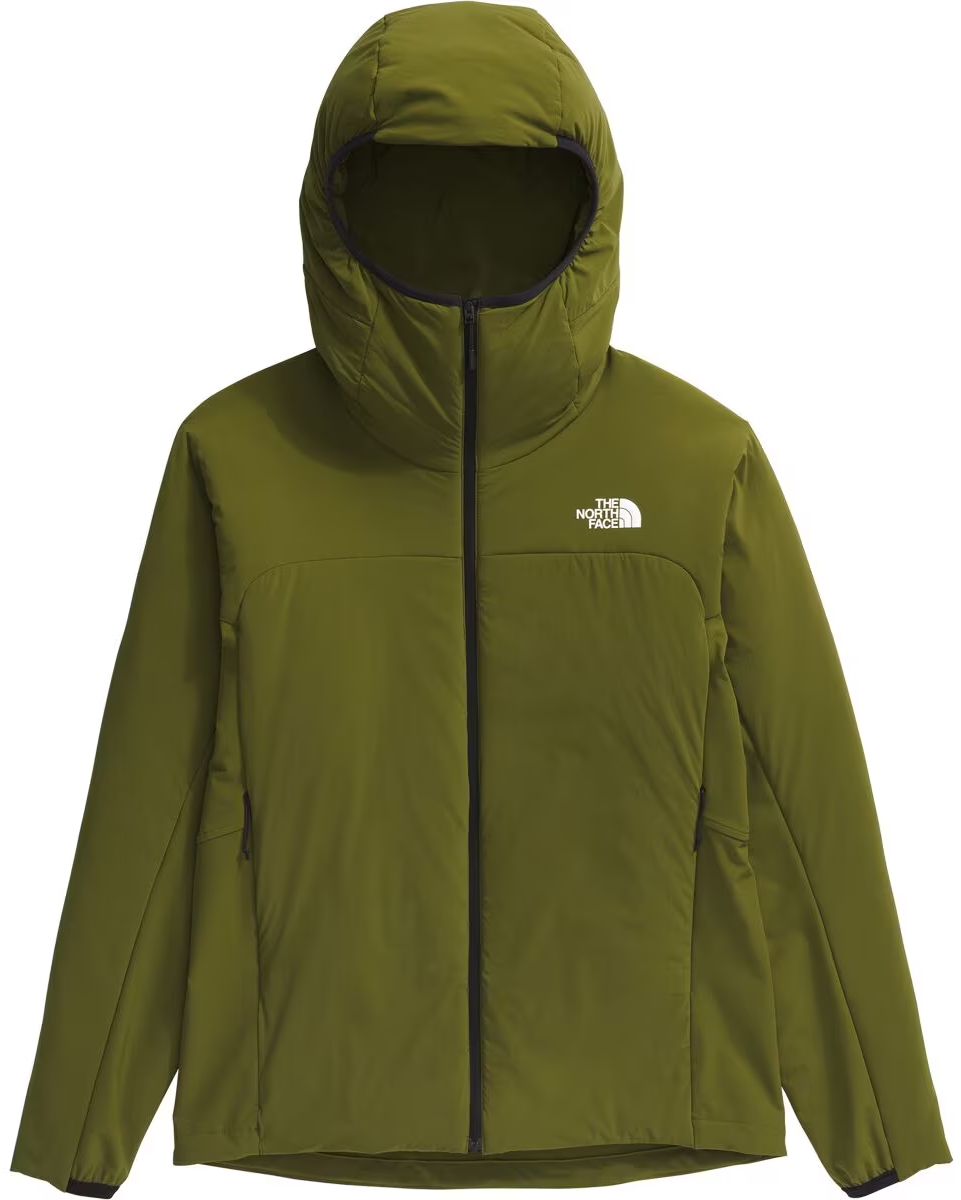 Weight: 1 lb 0.6 oz. (men's), 14.8 oz. (women's)
Weight: 1 lb 0.6 oz. (men's), 14.8 oz. (women's)
Insulation: Ventrix (60g + 40g)
What we like: Best-in-class breathability and durability.
What we don’t: A little heavy; air-permeable build sacrifices some warmth.
In the synthetic-versus-down-insulation debate, synthetic fill is the better (read: more breathable) option for high-output pursuits. That said, we still see a lot of variation within the category: Down-mimicking jackets are built to trap heat, while active insulation pieces typically feature stretch-infused shells that prioritize both mobility and air permeability (we break this down further in our buying advice below). For the best in active insulation, we love The North Face’s Summit Series Casaval Hybrid Hoodie, which combines 60-gram Ventrix insulation (40g in the hood) with breathable, sweatshirt-like panels under the arms and along the hem (TNF markets it as “high CFM,” which denotes a low level of windproofing). The Casaval Hybrid is also one of the toughest designs here with a mix of 40- and 75-denier fabrics. It all adds up to our favorite synthetic jacket for sweat-inducing activities like backcountry skiing, trail running, and rock climbing. This was our synthetic insulator of choice for a fast-paced mission on the North Cascades High Route.
Hybrid active insulators like the Casaval are a growing trend, and another one of our favorites includes Patagonia’s Nano-Air Light Hybrid. The Nano-Air features breathable, zigzagging fleece borrowed from the R1 Air series along the back, sides, and under the arms. These types of jackets sacrifice some warmth in the name of air permeability, but it’s a worthwhile trade-off for sweat-inducing activities when you’re generating your own heat. A final thing worth noting specific to the Casaval is that it’s on the heavier end at just over a pound (for the men's version), but it’s cheaper than a lot of the competition and an excellent companion for everything from backcountry skiing to cool-weather trail running and rock climbing.
See the Men's TNF Casaval Hybrid Hoodie See the Women's TNF Casaval Hybrid Hoodie
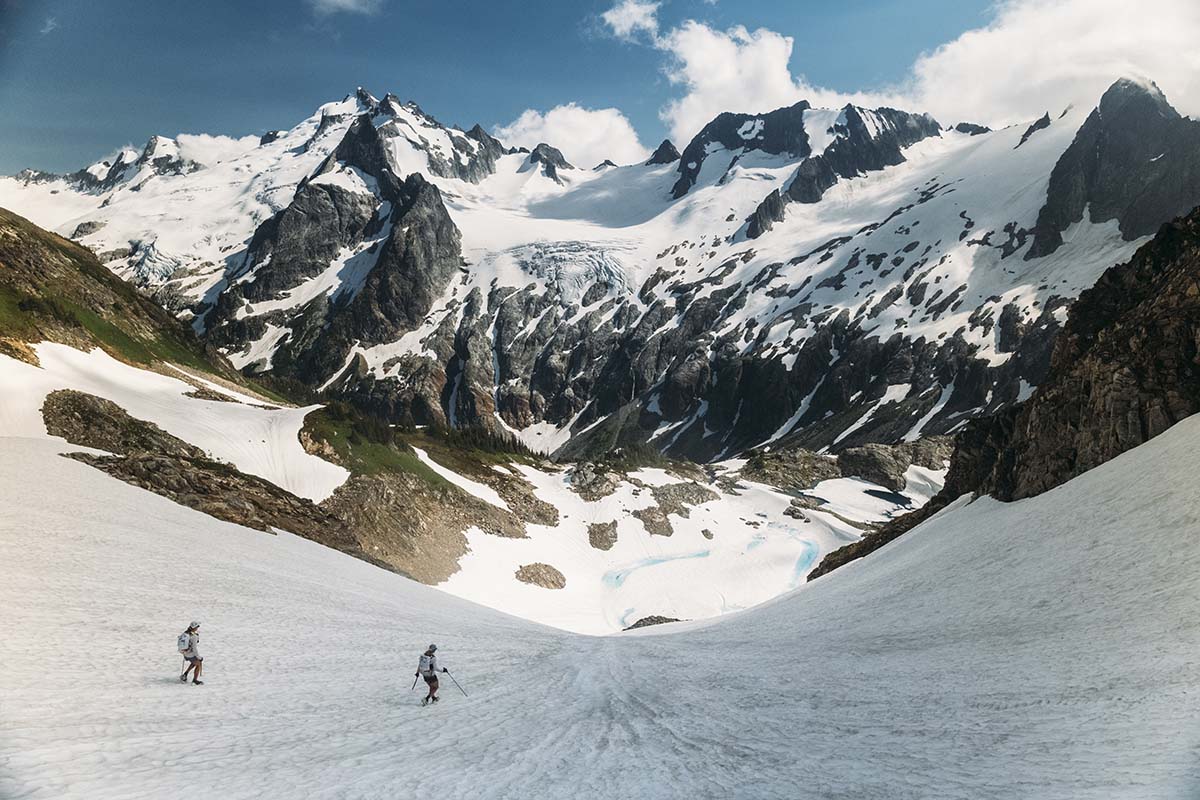
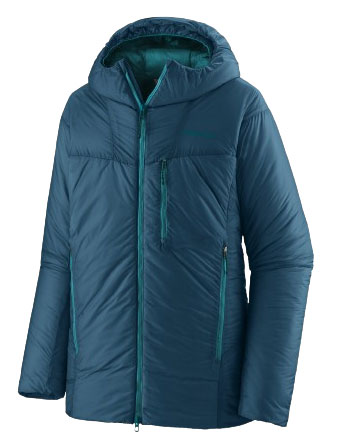 Weight: 1 lb. 3.6 oz. (men's), 1 lb. 2.4 oz. (women's)
Weight: 1 lb. 3.6 oz. (men's), 1 lb. 2.4 oz. (women's)
Insulation: PrimaLoft Gold Eco w/ Cross Core (133g + 40g)
What we like: Very warm and impressively weatherproof.
What we don’t: Expensive and overkill for most.
Synthetic already has a leg up over down in terms of weather resistance, but couple that with a highly water-repellent face fabric and hefty DWR coating, and you get an insulated jacket that can truly hold its own against the elements. The Patagonia DAS Parka earns a spot in our top five for this reason, and it’s been a favorite among the winter climbers on our staff in particular. Its Pertex Quantum Pro fabric is what keeps the wet at bay, and the 133-gram PrimaLoft insulation (with lighter 40g in the core) makes the DAS one of the most insulated jackets on this list (which is impressive given its 1 lb. 3.6 oz. weight). In fact, the DAS Parka is so warm that you won’t want to keep it on during any sort of movement, but it’s an ideal choice for cold belays, breaks while skiing, and other low-output activities.
It’s worth noting that we previously had Patagonia’s less insulated DAS Light Hoody ranked here, which used lighter PlumaFill insulation (65g) for added versatility in mild conditions. The DAS Light has been temporarily discontinued pending an update this August, and we look forward to testing the latest version when it becomes available. While considerably warmer, the DAS Parka is no slouch: Although thin, the 10-denier shell is surprisingly abrasion-resistant and has held up very well to wear and tear, and the parka is impressively cozy and protective for its weight. It’s a steep investment at $449, but for the right uses—think drippy alpine belays and blustery backcountry transitions—the DAS Parka is a true standout. Note: The women's DAS is low on stock at the time of publishing, but a new version will be returning on August 6th. We will be sure to update our review once we get some experience with the latest design.
Read more: Patagonia DAS Parka review (women's version)
See the Men's Patagonia DAS Parka See the Women's Patagonia DAS Parka

 Weight: 10.5 oz. (men's), 9.0 oz. (women's)
Weight: 10.5 oz. (men's), 9.0 oz. (women's)
Insulation: PlumaFill (65g)
What we like: Impressive warmth for the weight.
What we don’t: Not as weather-resistant as the DAS Parka above.
Few synthetic jackets, if any, have received the hoopla of the Micro Puff from Patagonia. As many brands have attempted, the jacket’s PlumaFill insulation tries its best to mimic the loftiness and warmth of down. Patagonia has done an excellent job here, and the Micro Puff lives up to its billing: It’s warm, light at just over 10 ounces, and compresses quite small for a synthetic, which makes it a nice companion for space-conscious activities like multi-pitch climbing and backcountry skiing. And with the most recent update, the jacket now features a more durable NetPlus shell (made with recycled fishing nets) and a longer, slightly trimmer fit that slides well under a hardshell.
The Micro Puff bears a lot of similarities to Patagonia’s DAS Light mentioned above, which is currently on its way out but expected to return this fall. Both jackets are stuffed with 65-gram PlumaFill insulation, feature 10-denier shells, and are highly packable. But the two pieces have quite different uses in our arsenal: While we love the DAS Light as an outer layer, the Micro Puff is the better midlayer thanks to its trimmer fit and increased breathability (it lacks the DAS Light’s Pertex Quantum shell). It also comes in a non-hooded version, which can be great when pairing the jacket with a hooded hardshell or rain jacket. On the other hand, the DAS Light is the more versatile design, with a more accommodating fit, weather-resistant shell, two-way zipper, and helmet-compatible hood. But for those prioritizing weight savings above all else, the Micro Puff can’t be beat.
Read more: Patagonia Micro Puff review (women's version)
See the Men's Patagonia Micro Puff See the Women's Patagonia Micro Puff

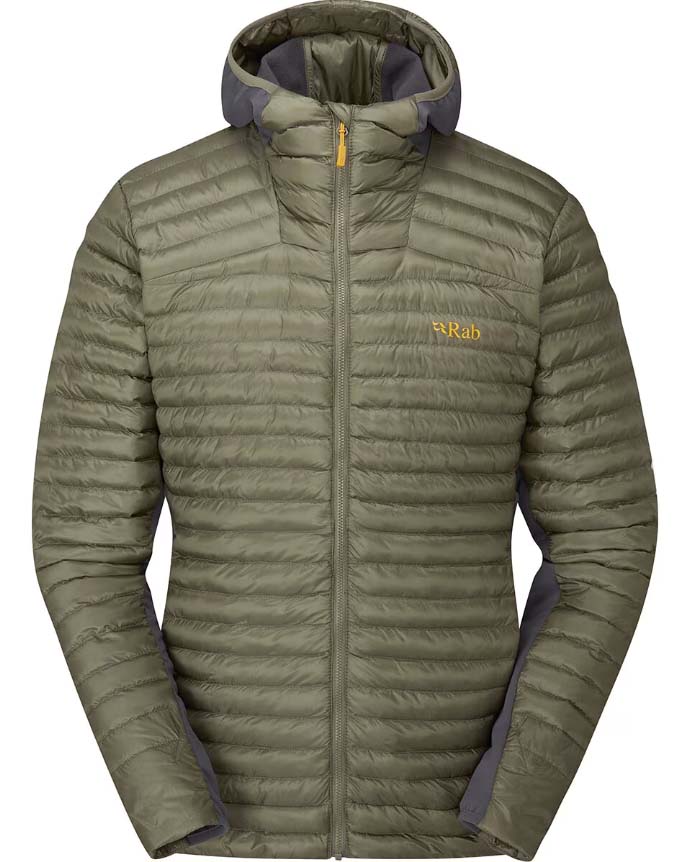 Weight: 15.7 oz. (men's), 13.4 oz. (women's)
Weight: 15.7 oz. (men's), 13.4 oz. (women's)
Insulation: PrimaLoft Silver RISE (157g men's; 130g women's),
What we like: A versatile and mountain-ready synthetic jacket at a good value.
What we don’t: Heavier than most of the competition and runs small.
U.K.-based Rab is no stranger to variable alpine conditions, and their Cirrus Flex is a great companion for serious mountain-goers. This mid-range jacket combines thick PrimaLoft Silver RISE fill (157g) along with a durable 20-denier Pertex Quantum shell, meaning it resists moisture better than the more sweatshirt-like designs here. These two factors (down-like insulation and a 100% nylon shell) don’t add up to great breathability, but Rab tacked on stretchy underarm panels that are very effective at dumping heat. The feature set also includes internal stash pockets and a packable design, both of which we love for more technical activities like climbing and skiing. This was one of our insulators of choice for a long climb of the Cirque of the Towers Traverse in Wyoming.
At $185, you’d be hard-pressed to find a better value than the Rab Cirrus Flex (the non-hooded version is even more cheaper at $165), but we hesitate to recommend it as a dedicated high-performance layer. The primary reason for this is its weight and bulk: At 15.7 ounces, the Cirrus Flex is noticeably heavier and less packable than down-mimicking designs like Patagonia’s Micro Puff above. This could very well be a dealbreaker for weight-conscious mountain missions, but you’re unlikely to notice the difference when day hiking, cragging, or walking around town. Finally, keep in mind that the Cirrus Flex runs pretty small—we recommend trying it on before buying, as you’ll likely want to size up. For a step up in durability, Rab’s Cirrus Alpine features a thicker shell fabric (30D) and more insulation but lacks the Flex’s stretchy side panels, weighs more at 1 pound 2.2 ounces, and costs an additional $30.
See the Men's Rab Cirrus Flex See the Women's Rab Cirrus Flex
 Weight: 14.1 oz. (men's), 12.4 oz. (women's)
Weight: 14.1 oz. (men's), 12.4 oz. (women's)
Insulation: FullRange (60g)
What we like: Best-in-class comfort.
What we don’t: Doesn’t excel in any performance category.
The Nano-Air from Patagonia may not be our top overall pick, but it wins outright in one important category: comfort. This pillowy synthetic jacket feels like a combination of a high-end performance piece and your favorite sweatshirt; it’s extremely soft, stretchy, and breathable. Climbers and active folks love its ability to move and breathe (the FullRange insulation and stretchy shell are noticeably more airy than the Atom above), and you won’t find a cozier piece for daily use or travel. Back when the jacket was introduced, Patagonia marketed it with a “put it on, leave it on” campaign, which is a great synopsis of the Nano-Air’s strengths.
The latest Nano-Air features a regular fit (the outgoing model was slim-fitting), a slightly lighter and 100%-recycled face fabric, an extra chest pocket, and an adjustable hem. But despite having a price tag that rivals many of our top picks, the jacket doesn’t shine in any performance category. It’s fairly heavy and bulky at 14.1 ounces, isn’t particularly weather-protective (you do get a PFC-free DWR coating), and, with thicker insulation and roomier dimensions, can’t compete with the Casaval Hybrid above for active use. But for daily wear, casual backpacking, and even resort skiing, you won’t find a more comfortable jacket. It’s also worth checking out Patagonia’s Nano-Air Light Hybrid ($299), which uses 40-gram FullRange insulation at the front and patterns more breathable fleece at the back and under the arms. Note: The Nano-Air has low stock at the time of publishing (particularly the men's version), but will be returning August 6th. We will be sure to update our review once we get some experience with the latest design.
Read more: Patagonia Nano-Air review (women's version)
See the Men's Patagonia Nano-Air Hoody See the Women's Patagonia Nano-Air Hoody
 Weight: 11.3 oz. (men's), 9.7 oz. (women's)
Weight: 11.3 oz. (men's), 9.7 oz. (women's)
Insulation: Thermo40 (40g)
What we like: Performance-oriented warmth and packability at a competitive price.
What we don’t: No stuff pocket and decidedly thin shell fabric.
Norrøna might fly a little under the radar this side of the Atlantic, but the Norwegian outdoor clothing brand gives names like Patagonia and Arc’teryx a run for their money. From their Falketind mountaineering collection, the Thermo40 is a high-quality synthetic jacket that’s priced competitively at $249. Clocking in at a decently light 11.3 ounces, the Norrøna is ready for the mountains, with windproof and water-resistant protection, a drop-tail hem for added coverage, and an adjustable and helmet-compatible hood. Further, the 10-denier shell fabric is soft, smooth-moving, and made from recycled materials (it’s also treated with a PFC-free DWR finish).
The Thermo40 is the latest addition to Norrøna’s Thermo series and recently replaced the warmer Thermo60. Though the 40 forgoes the 60’s stuff pocket, it has a longer cut and is both lighter and more compressible due to its thinner insulation. To be sure, Thermo synthetic doesn’t have the brand cachet of names like PrimaLoft or PlumaFill, but it offers a nice amount of loft despite the jacket’s competitive weight and packability. And we do have qualms about the thin 10-denier shell, which isn’t the most confidence-inspiring for use around sharp equipment. But for less than the competition, the Thermo40 has a lot going for it and could be well worth the savings for everything from backpacking to multi-pitch climbing and mountaineering.
See the Men's Norrøna Falketind Thermo40 See the Women's Norrøna Falketind Thermo40
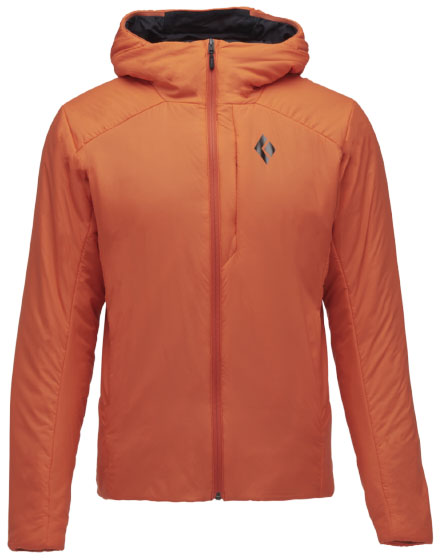 Weight: 14.3 oz. (men's), 11.5 oz. (women's)
Weight: 14.3 oz. (men's), 11.5 oz. (women's)
Insulation: PrimaLoft Gold Active
What we like: A stretchy and breathable insulator that's purpose-built for skiing and climbing.
What we don’t: Not quite as durable as the Nano-Air above.
Black Diamond specializes in climbing and skiing, and their jacket collection reflects this expertise with a number of purpose-built offerings for everything from expedition use to heart-pumping dawn patrols. We like their heavyweight Solution 4.0 Parka for cold weather, but the First Light 2.0 Stretch is a much more active synthetic that can be worn in a range of conditions as an outer layer or midlayer. To be sure, the jacket’s designers have ski touring and climbing in mind—they call the First Light an ideal “start-stop” piece, and its build and feature set agree. If you’re in the market for a soft synthetic jacket (much like the Nano-Air above) but want a bit more of a performance focus, the Black Diamond is well worth a closer look.
Like many active insulators, the First Light 2.0 Stretch has a soft, supple face fabric that can take some use and abuse and holds up decently to light rain or snow (thanks to a PFAS-free DWR). And with a fairly recent update to PrimaLoft Gold Active insulation (along with a baffle-free design), the latest jacket is both lighter and more efficient than the prior model. It's a tough call between the First Light Stretch and the aforementioned Nano-Air: The Nano has thicker face fabric (30D vs. 20D) and an extra external chest pocket, while the First Light is slightly more trimmed-down for performance use. In the end, both are great active insulators that will get the job done whether in the mountains or around town. Finally, it's also worth mentioning a new offering from BD in a similar category: the Solution Hoody (reviewed below). We have been swapping between that and the First Light Stretch for several climbing missions this season.
See the Men's BD First Light 2.0 Stretch Hoody See the Women's BD First Light 2.0 Stretch Hoody
 Weight: 11.9 oz. (men's), 10 oz. (women's)
Weight: 11.9 oz. (men's), 10 oz. (women's)
Insulation: PrimaLoft Gold Eco (60g)
What we like: Lightweight feel and a great synthetic jacket for casual use.
What we don’t: Will have trouble withstanding serious cold or wet.
Before the Micro Puff there was the Nano Puff. This versatile synthetic jacket is a nice choice for around-town use, walking and hiking on crisp days, and even as a midlayer for resort skiing. The Nano Puff feels somewhat similar to a lightweight down jacket but with better wet-weather performance and a lower price. This combination has made it one of Patagonia’s best-selling jackets year after year.
For those deciding between the gaggle of Patagonia synthetic jackets included on this list, here is what you need to know: The Nano Puff is the most casual of the group, has a shell that is more slick than soft, and features a roomy yet lightweight build that's made it popular for daily use, travel, and light adventuring. On the other hand, the Nano-Air above is softer to the touch and more breathable (a better option for active use), the Micro Puff is very close to a lightweight down jacket in terms of warmth and breathability, and the DAS Parka is far and away the warmest and most weather-resistant of the bunch thanks to its thick insulation and Pertex Quantum Pro shell.
Read more: Patagonia Nano Puff Hoody review (men's version)
See the Men's Patagonia Nano Puff See the Women's Patagonia Nano Puff
 Weight: 1 lb. 2.0 oz. (men's), 1 lb. 0.2 oz. (women's)
Weight: 1 lb. 2.0 oz. (men's), 1 lb. 0.2 oz. (women's)
Insulation: G-Loft Supreme (60g)
What we like: Everyday appeal and premium build quality.
What we don’t: Pricey given its casual slant.
Many of the designs on this list have a performance slant, but few can match the casual appeal of the Keb Padded Hoodie. Simply put, this is one of the best-looking synthetic jackets on the market with the sleek styling that Fjallraven is known for. The insulation is 100% polyester called G-Loft Supreme, and the fibers are hollow and intended to create pockets of air like down (we’ve found that this is executed with varying degrees of success). And we appreciate details like hood and hem adjustments, a two-way main zipper, and ample pockets including one at the chest and one on the interior. Added up, the Keb is a great urban piece that also can work well for light fall and winter adventuring.
Like many Fjallraven gear items, the Keb Padded Hoodie is both expensive and has its limitations. Without a doubt, you don’t get the high-tech active insulation of similarly priced jackets from top brands like Arc’teryx and Patagonia, which means that breathability and packability aren’t as good. And for $250, you can get a nice down jacket that will offer even more warmth. But the Keb will perform better in wet conditions than down, and again, we love the look and build quality of Fjallraven products in general. Of note: Fjallraven also makes the Expedition X-Latt, which has a much lighter build (11.2 oz.) and is more ideal for active pursuits like hiking and backcountry skiing.
See the Fjallraven Keb Padded Hoodie See the Women's Keb Padded Hoodie
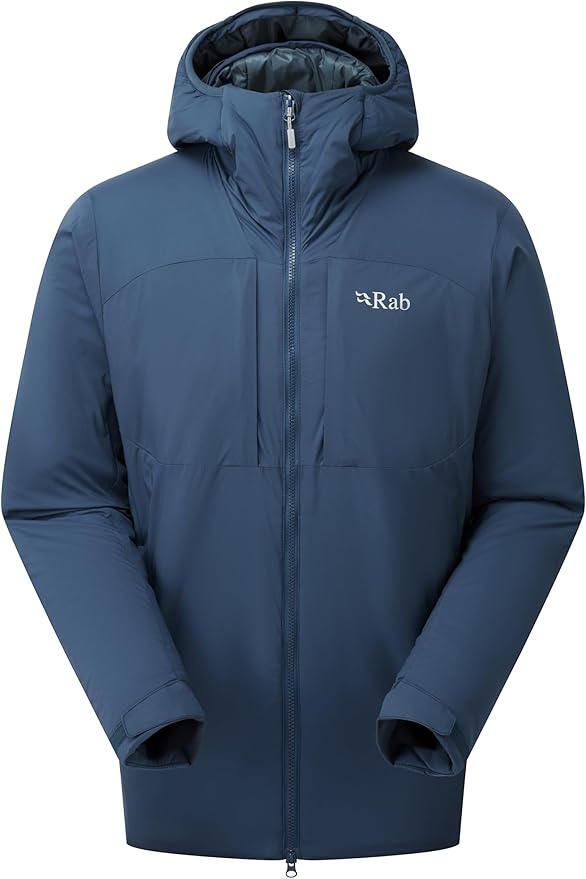 Weight: 1 lb. 3.5 oz. (men's), 1 lb. 1.2 oz. (women's)
Weight: 1 lb. 3.5 oz. (men's), 1 lb. 1.2 oz. (women's)
Insulation: PrimaLoft Gold Active+ (133g)
What we like: Comparable warmth and performance to the DAS Parka above for considerably less.
What we don’t: Heavy and sacrifices a little wet-weather protection in the name of breathability.
Patagonia’s DAS Parka above is our favorite weather-protective synthetic jacket for cold-weather use, but Rab’s Xenair Alpine Insulated isn’t far behind and costs considerably less. Like the DAS Parka, the Xenair is packed with thick, 133-gram PrimaLoft insulation (in this case, their Gold Active+ variety) and boasts a weather-ready Pertex Quantum Air shell for added assurance when the skies open up. Importantly, the small differences in insulation and shell type give the Xenair the clear edge in breathability—one of our editors who is an avid backcountry skier finds it to be a nice middle ground between Patagonia’s Nano-Air and DAS Parka—although it's still best suited for low-output activities in cold conditions. And perhaps most notably, the Xenair undercuts the DAS Parka significantly in price, which is truly a steal for such a warm and technically capable piece.
Why, then, don’t we rank the Xenair higher? Unfortunately, the stronger focus on breathability translates to a drop in wet-weather performance compared to the DAS Parka, although neither jacket is built to handle heavy or extended precipitation. It’s also on the heavier end (right on par with the DAS), lacks internal drop-in pockets for stashing items like climbing skins or gloves during transitions, and doesn’t come with a stuff sack or pocket for stashing away when not in use. For a step down in warmth and price, Rab’s Xenair Alpine Light Insulated Jacket swaps in thinner 60-gram insulation and checks in at a competitive 10.9 ounces. But for heart-of-winter use while belaying or transitioning, the warmer Xenair is a well-built DAS Parka alternative at a hard-to-beat price.
See the Men's Rab Xenair Alpine See the Women's Rab Xenair Alpine
 Weight: 10.9 oz. (men's), 9.6 oz. (women's)
Weight: 10.9 oz. (men's), 9.6 oz. (women's)
Insulation: VerticalX SuperStrand
What we like: A lightweight and packable synthetic for over $100 less than the Micro Puff.
What we don’t: Not very warm and shell fabric wets out in light moisture.
Released a few years back, Outdoor Research’s SuperStrand LT immediately caught our eye as a sleek competitor to the Micro Puff above. We recently wore the jacket on a late-spring ski tour on Mount Rainier and found a lot to like: The Vertical X SuperStrand insulation does a great job mimicking down’s loft and compressibility, resulting in a relatively lightweight 10.9-ounce build that packs down into its left-hand pocket. The nylon shell is also noticeably soft and cozy (we were thankful to have it while waiting out a blizzard), and it’s held up decently well throughout months of use—we've worn it as a midlayer for skiing, an outer layer for backpacking, and more. And importantly, the price is decent at $235—much less than the aforementioned Patagonia.
You’d be hard-pressed to find a more lightweight and packable synthetic jacket at this price point, but the Outdoor Research is not without its compromises. True to the “LT” in its name, the SuperStrand lacks features like a hem or hood adjustment, chest pocket, and internal wind flap behind the front zipper. What’s more, it’s quick to wet out in a light rainfall, and we’ve noticed that the synthetic fill has a tendency to creep out through the seams, resulting in a (forgive the pun) super strandy jacket. Finally, the SuperStrand LT is about the same bulk and weight as the Micro Puff, but definitely not as warm. But if cost-savings is your priority, the OR is a nice middle ground that won’t weigh you down.
Read more: Outdoor Research SuperStrand LT review (women's version)
See the Men's OR SuperStrand LT Hoodie See the Women's OR SuperStrand LT Hoodie
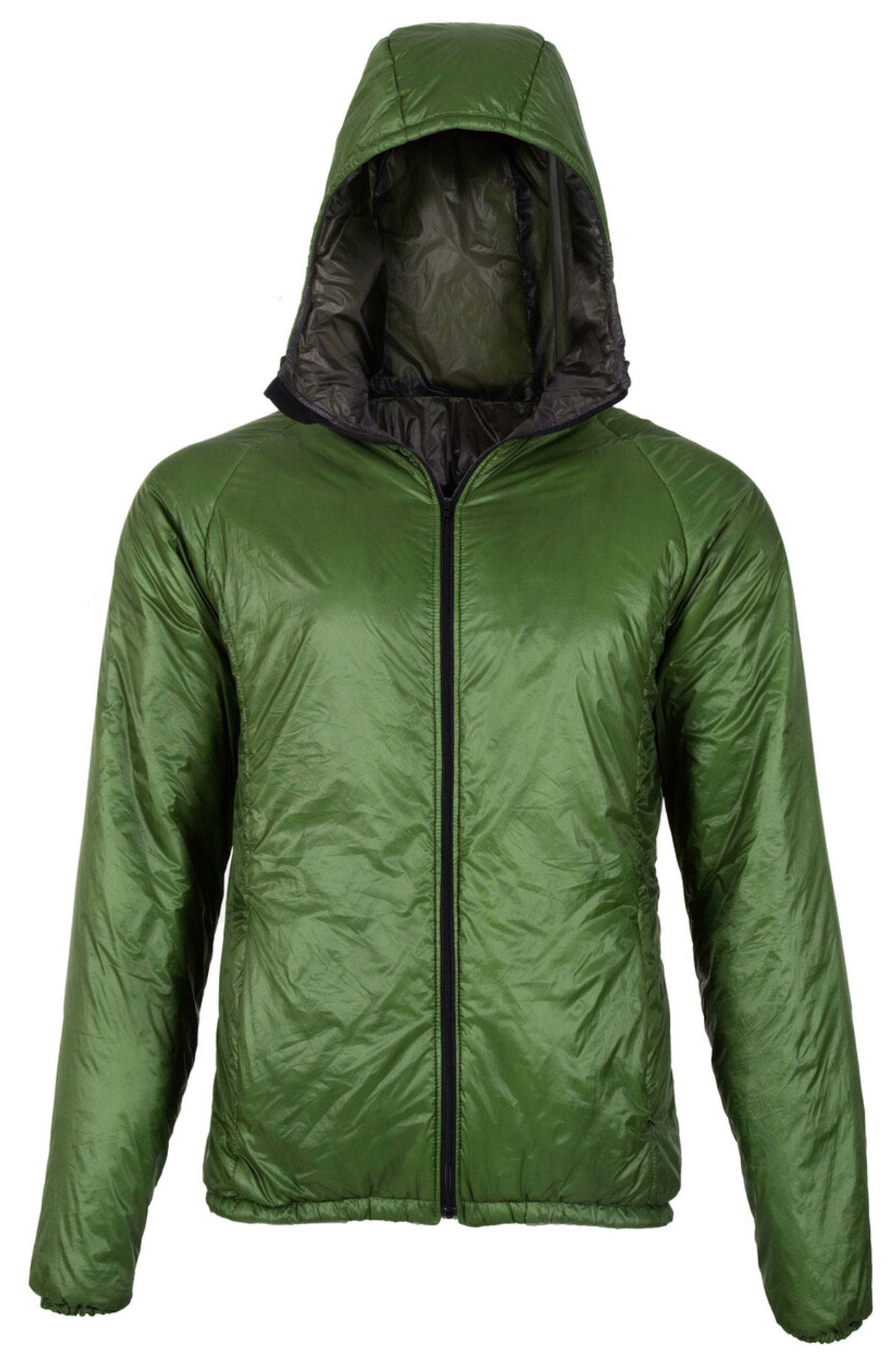 Weight: 8.9 oz. (men's medium 10D), 7.6 oz. (women's small 10D)
Weight: 8.9 oz. (men's medium 10D), 7.6 oz. (women's small 10D)
Insulation: Climashield Apex (65g)
What we like: Ultralight, warm, and reasonably priced.
What we don’t: Lack of storage, no cord adjustment in the waistband, and the jacket takes weeks to ship (for custom orders).
The majority of the jackets on this list aim to balance performance and casual use, but the Enlightened Equipment Torrid is an outlier. Simply put, this is a true ultralight synthetic-insulated jacket built with serious thru-hikers in mind. It weighs just 8.9 ounces for the hooded version in a men’s medium and 10D fabric, is filled with 65g Climashield Apex insulation, and has a 10-denier shell fabric with a DWR finish (to cut even more weight, a 7D fabric option is available). You won’t get fancy logos or much in the way of everyday appeal, but the Torrid is beloved by long-distance hikers. The Torrid was one of our author's steed of choice for back-to-back thru-hikes of the CDT and AT. One jacket lasted him the entire 5,000-mile journey with only a few rips and tears to speak of.
Another interesting UL option comes from Utah-based Outdoor Vitals. Their Vario Jacket clocks in just a tad heavier than the Torrid (9 oz. for the men’s medium) but uses a stretchy and more durable ripstop nylon face fabric that’s similar to designs like the Casaval Hybrid and Atom above. With thinner 40-gram insulation, a more air-permeable shell, and perforated underarm vents, the Vario is a better fit for active pursuits (such as wearing while you hike), but the Torrid remains a more suitable choice for chilly evenings at camp. Most other competitors are ultralight down jackets like the Mountain Hardwear Ghost Whisperer and various Montbell models, which we don’t recommend in wet or damp conditions.
See the Men's Enlightened Equipment Torrid See the Women's Enlightened Equipment Torrid
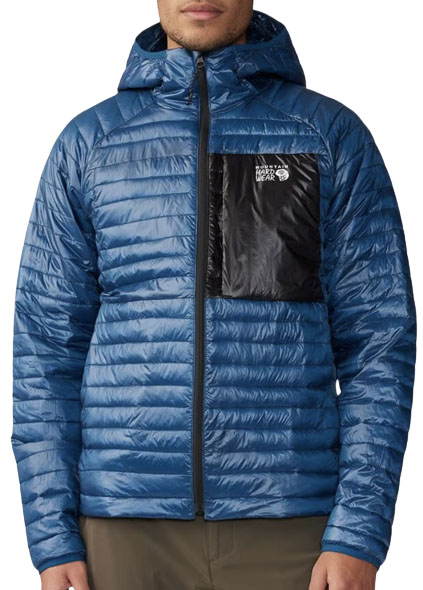 Weight: 12.8 oz. (men's), 11.7 oz. (women's)
Weight: 12.8 oz. (men's), 11.7 oz. (women's)
Insulation: ThermaCloud AF
What we like: Attractive styling that mimics a down jacket.
What we don’t: Heavier than the ultralight competition.
Mountain Hardwear's Ghost Whisperer Hoody is one of our favorite ultralight down jackets, but—as we know—down has its limitations. For wet climates, their newer synthetic insulated Ventano is a much more reliable option. The Ventano retains the look and feel of a down puffy, with lofty ThermaCloud AF fill, horizontal baffles, a thin (15D) ripstop nylon shell, and a packable design that stuffs into its hand pocket. But unlike the minimalist Ghost Whisperer, it tacks on a number of useful features, including three external pockets, dual hem adjusters, and a hood cinch.
Down-mimicking jackets are often our go-tos for weight- and space-conscious endeavors, but the Ventano isn’t as streamlined as our top picks. At 12.8 ounces, it’s significantly heavier than Patagonia’s Micro Puff (10.5 oz.) and doesn’t pack down quite as small. What’s more, the jacket’s simple nylon shell can’t match the weather resistance of those that use Pertex, including the DAS Parka and Rab options above. But it’s hard to argue with the price, and the Ventano's attractive styling is arguably more versatile for wearing around town. For an active insulator from Mountain Hardwear similar to the likes of the Nano-Air above, check out their Kor Stasis Hoody.
See the Men's MH Ventano Hoody See the Women's MH Ventano Hoody
 Weight: 12.7 oz. (men's), 11.6 oz. (women's)
Weight: 12.7 oz. (men's), 11.6 oz. (women's)
Insulation: Primaloft Gold Eco (60g)
What we like: Stellar warmth in a compact, weather resistant design.
What we don’t: Thin outer shell; tight across the chest; not as durable as others.
Black Diamond designed the Solution 2.0 Hoody with climbers in mind, and it shows. This synthetic jacket features 60g of PrimaLoft Gold Eco insulation for reliable warmth in cold conditions, a PFAS-free DWR-treated shell for light weather protection, and a streamlined design that works well both on and off the wall. Our tester put the Solution through its paces on guiding trips in Zion, ski patrol duties in southern Utah, and multi-pitch climbs in Red Rocks, where it kept him warm during freezing belays and snow flurries. It packs decently small into its own chest pocket (with a built-in carabiner loop) and proved to be an effective outer layer in everything from brisk fall traverses to fast-and-light winter objectives.
That said, the Solution isn’t without drawbacks. The 20-denier shell helps keep weight low (12.7 ounces) but offers limited durability for rough granite or frequent off-width battles. Fit can also be an issue: while it worked great for slender testers, those with broader shoulders found the non-stretch fabric too restrictive for climbing. We also had consistent issues with the waist cinch cords, which hang awkwardly near harness gear loops and are prone to snagging. Still, if it fits your frame and you’re looking for a warm, belay-friendly synthetic jacket that won’t weigh you down, the Solution 2.0 Hoody is a well-rounded piece for shoulder-season climbing and light alpine use.
See the Men's Black Diamond Solution 2.0 See the Women's Black Diamond Solution 2.0
| Jacket | Price | Weight* | Insulation | Fabric | Packable |
|---|---|---|---|---|---|
| Arc’teryx Atom Hoody | $300 | 13.1 oz. | Coreloft Compact (60g) | 20D | No |
| Cotopaxi Teca Cálido Hooded | $150 | 12.7 oz. | Recycled polyester (60g) | Unavail. | Yes |
| TNF Casaval Hybrid Hoodie | $260 | 1 lb. 0.6 oz. | Ventrix (60g+40g) | 40 & 75D | No |
| Patagonia DAS Parka | $449 | 1 lb. 3.6 oz | PrimaLoft Gold Eco (133g+40g) | 10D | Yes |
| Patagonia Micro Puff Hoody | $329 | 10.5 oz. | PlumaFill (65g) | 10D | Yes |
| Rab Cirrus Flex Hoodie | $185 | 15.7 oz. | PrimaLoft Silver RISE | 20D | Yes |
| Patagonia Nano-Air Hoody | $329 | 14.1 oz. | FullRange (60g) | 30D | Yes |
| Norrøna Falketind Thermo40 | $249 | 11.3 oz. | Thermo40 (40g) | 10D | No |
| Black Diamond First Light 2.0 | $349 | 14.3 oz. | PrimaLoft Gold Active | 20D | Yes |
| Patagonia Nano Puff Jacket | $239 | 11.9 oz. | PrimaLoft Gold Eco (60g) | 20D | Yes |
| Fjallraven Keb Padded Hoodie | $250 | 1 lb. 2.0 oz. | G-Loft Supreme (60g) | Unavail. | No |
| Rab Xenair Alpine | $260 | 1 lb. 3.5 oz. | PrimaLoft Gold Active+ (133g) | 20D | No |
| Outdoor Research SuperStrand LT | $235 | 10.9 oz. | VerticalX SuperStrand | 12D | Yes |
| Enlightened Equipment Torrid | $200 | 8.9 oz. | Climashield Apex (65g) | 10D | No |
| Mountain Hardwear Ventano Hoody | $250 | 12.8 oz. | ThermaCloud AF | 15D | Yes |
| Black Diamond Solution 2.0 Hoody | $299 | 12.7 oz. | Primaloft Gold Eco (60g) | 20D | Yes |
*Editor's note: Listed weight is for the men's version
Most of us at Switchback Travel get out year-round in many different ways, and as a result, we have several jackets in our quiver, depending on the conditions and our intended use. Those of us who live in wet climates like the Pacific Northwest are particularly fond of synthetic jackets for their ability to continue insulating when wet (unlike down jackets, which tend to clump up). We first kicked off this guide in 2015 with nine of our favorite weather-ready synthetics. Former editors Jenny Abegg and John Ellings took over the guide in the early 2020s, contributing their expertise as avid backcountry-goers who aren’t deterred by questionable forecasts. Senior editor Chris Carter now leads the charge on this lineup. A seasoned thru-hiker, rock climber, and traveler, Chris has completed the Triple Crown of long trails in the U.S. (AT, PCT, and CDT) and continues to backpack, climb, and explore whenever he can. He's tested just about every top synthetic jacket on the market and allows only the best into this guide.
Our testing process for synthetic jackets is similar to that of other insulating layers (including down jackets and fleece jackets): We take them out on real-world adventures, evaluating their performance on multi-pitch climbs, during ski tours in the alpine, and on backpacking and hiking trips on trails across the country. To gauge warmth, we take these pieces into variable conditions, from frigid, mid-winter days to warm shoulder-season outings and cool summer evenings at camp. We evaluate breathability by working up a sweat on the skin track or the approach and also consider factors like long-term durability, fit, weight, and packability. Finally, we make sure to pay attention to the smaller details like zippers, drawcords, and pockets, all of which can have a sizable impact on overall performance. Given that the market is constantly changing, we’ve slotted this guide into a regular update schedule to stay on top of the latest and greatest designs.
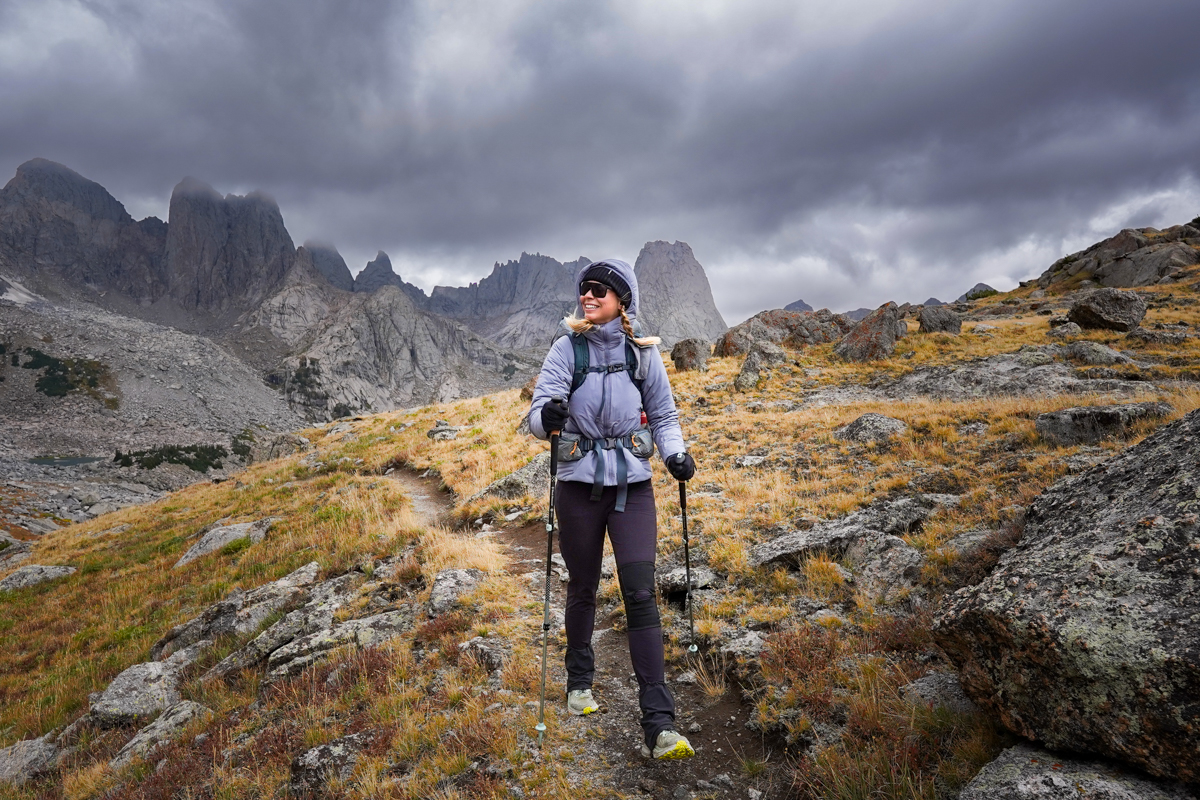
In general, we see two main styles of synthetic insulated jackets: those that aim for maximum warmth at a minimum weight and packed size (similar to a down jacket) and breathable offerings intended primarily for active use. Between these two categories, the key differences include the style of synthetic fill and the weight and makeup of the shell fabric. When considering which synthetic insulated jacket is best for you, choosing between these two categories is a great place to start.
Down-Mimicking Insulation
Synthetic insulated jackets that mimic the style and function of down jackets are great for those concerned primarily with maximizing warmth and minimizing weight and bulk. These jackets pair thin, 100% nylon shells with synthetic filaments and fibers that look and act much like goose and duck plumage. In most cases, baffles are used to keep the insulation in place. Much like down puffies, jackets in this category aren’t particularly good breathers, but they’re nevertheless great options for low-output endeavors or activities that prioritize weight-savings above all else, including multi-pitch rock climbing and backpacking. Some of our favorite down-mimicking offerings include the Patagonia Micro Puff and Outdoor Research SuperStrand LT.
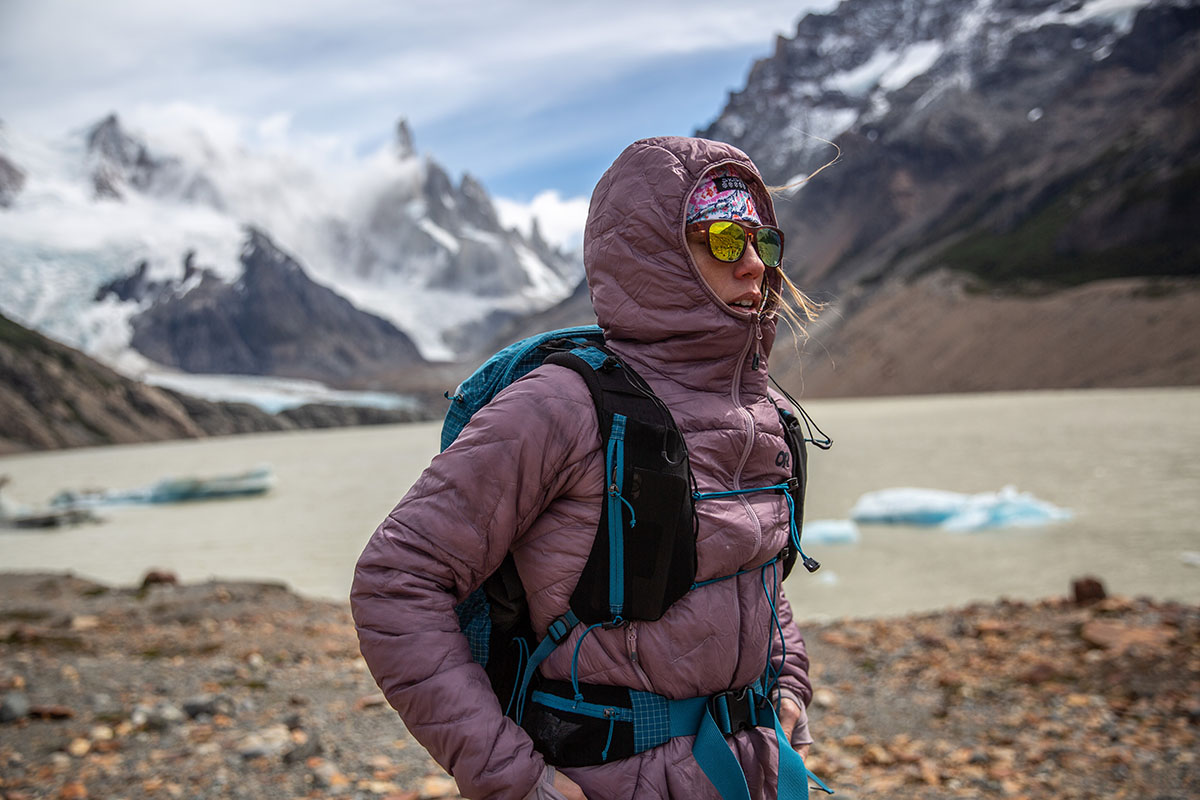
Active Insulation
For high-output activities like backcountry skiing and hiking, we reach for a synthetic jacket in the active insulation category. These jackets feature soft and stretchy shell materials and sheets of synthetic insulation that don’t require baffles to keep them in place (common names include Coreloft, FullRange, and PrimaLoft Gold Active). While this style of insulation doesn’t mimic down plumage, it still does a great job trapping heat—albeit with more bulk and weight. Due to their more sweatshirt-like material, active insulation pieces move and breathe remarkably well but are less wind and water resistant than the all-nylon shells mentioned above. We love jackets in this category for all day wear and active use when comfort and mobility matter more than weight. Some of our favorite active insulation jackets include the Arc'teryx Atom, TNF Summit Series Casaval Hybrid, and Patagonia Nano-Air Hoody.
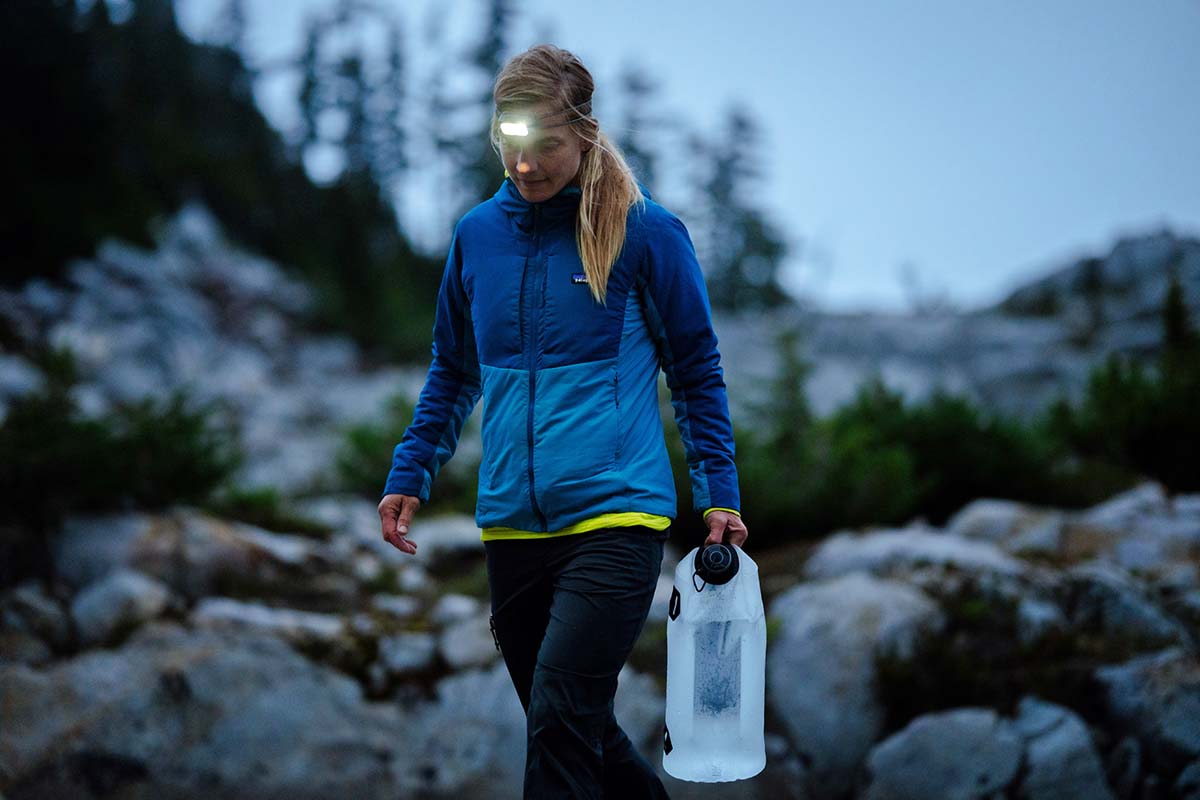
The single biggest selling point of synthetic fill over down fill is that it retains its ability to insulate when wet. With a down jacket, prolonged exposure to rain or snow will eventually lead to soaked feathers, causing them to lose their loft and warmth-creating potential. Even hydrophobic down technologies eventually give in to sustained moisture. A wet down jacket is heavy, won’t keep you warm, and takes much longer to dry out than a synthetic one. Synthetic insulation resists moisture and water instead sits between the fibers, allowing them to retain their shape, continue to insulate, and dry more quickly. The degree to which synthetic insulation resists water varies by type, but all synthetics repel moisture much better than down.
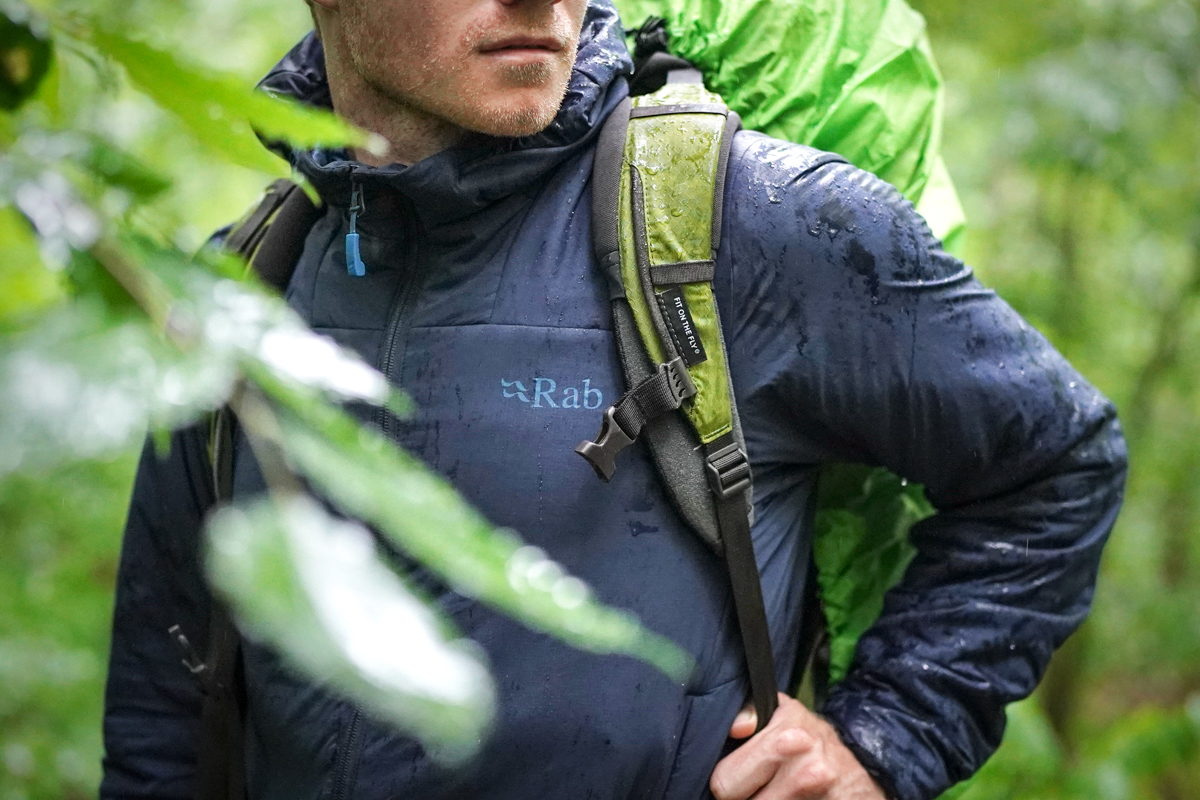
On both sides of the aisle, gear manufactures are commonly adding a DWR (durable water repellant) treatment to insulated jackets. This helps water bead off the shell instead of collecting and eventually soaking through to the interior of the jacket. DWR treatments do a pretty good job at repelling light to moderate precipitation, but by no means waterproof the jacket. Synthetic jackets do a much better job than down in wet conditions, but for prolonged exposure you will want to consider a rain shell.
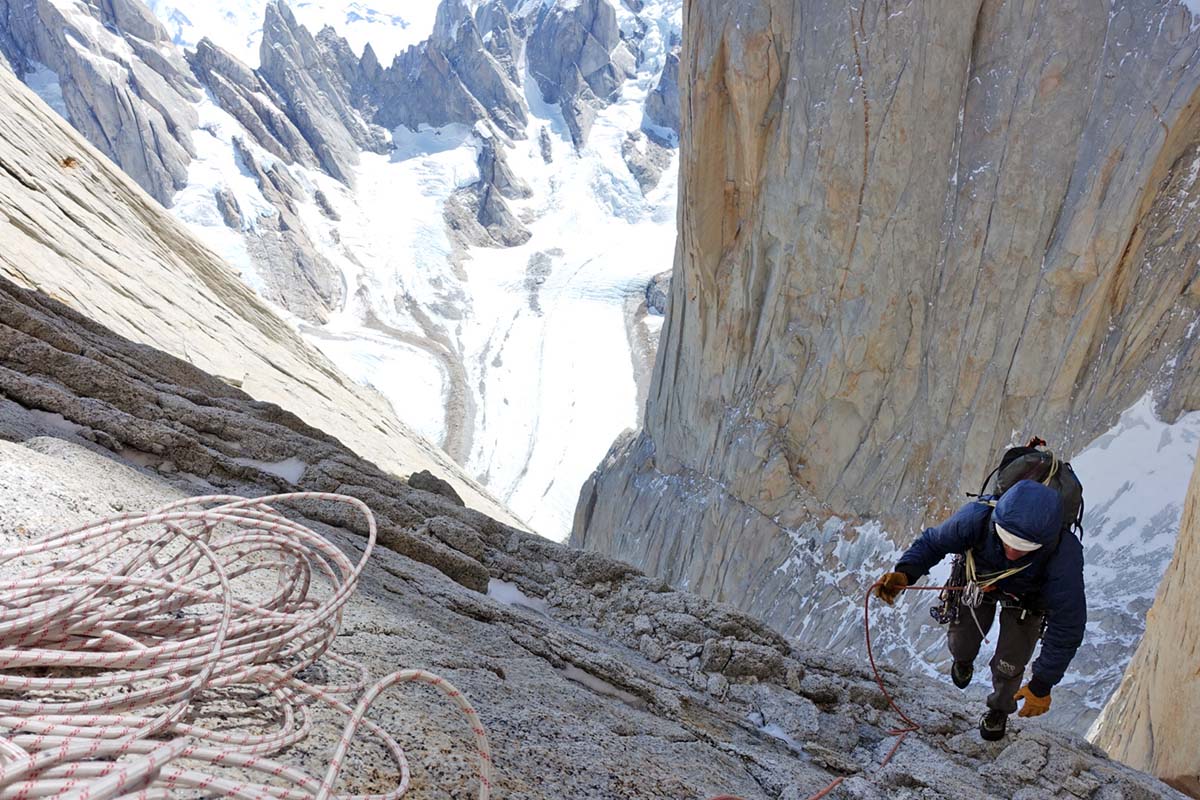
Without actually trying on a synthetic jacket, it can be difficult to discern the level of warmth it will provide. The warmth of synthetic fill is measured in terms of the weight of a 1-meter by 1-meter piece: For example, 60-gram FullRange clocks in at 60 grams for the 1-meter-squared piece of insulation. The majority of insulations are around 60 to 65-gram, and in most cases a larger number indicates a warmer insulation. But what this number doesn’t tell you is how much of the insulation is stuffed in the jacket, which can make a sizable difference in warmth. Here, the weight of the jacket becomes our best clue.
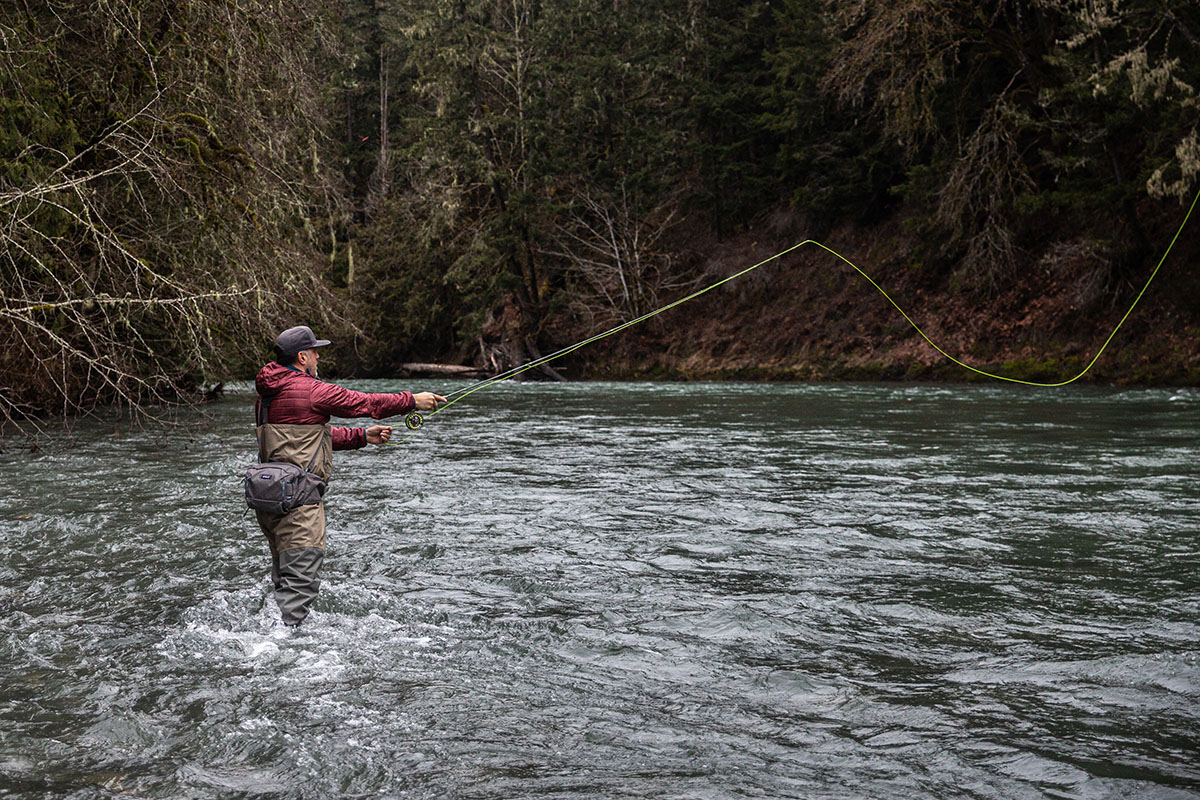
There is a significant amount of variation in the warmth of our synthetic jacket picks above. Popular models like the Patagonia Nano Puff and Arc’teryx Atom represent the middle ground: Both weigh 13 to 14 ounces and are designed for cool-weather fall and spring use. Jackets like the Arc'teryx Proton use lighter insulation and are ideal for active use but might not provide enough warmth for everyday wear. For freezing winter conditions, parkas like Patagonia's DAS and Rab's Xenair Alpine are true winter-weight synthetic jackets. And compared to down, synthetic insulation creates less warmth for its weight. For example, you can expect that a 12-ounce down jacket will be noticeably warmer than a 12-ounce synthetic jacket. However, down-mimicking synthetics in particular do a pretty respectable job in this department and are only getting better.
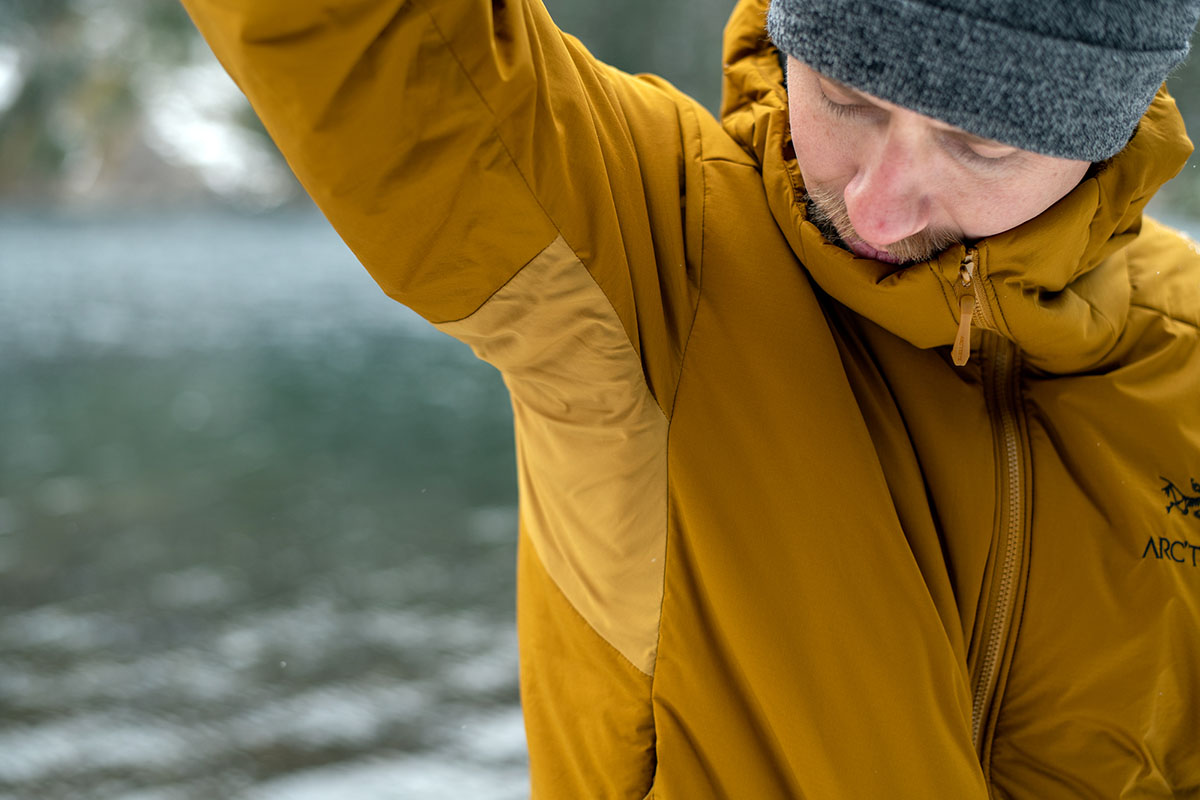
The breathability of a synthetic jacket comes down to two main factors: the type of fill and the style of shell and lining materials used. Fills that mimic down tend to breathe the least, while active insulations like Coreloft and FullRange do a great job regulating heat. In terms of the shell materials, jackets with stretch-infused or sweatshirt-like fabrics are particularly good at moisture wicking and breathability, while all-nylon shells perform the worst.
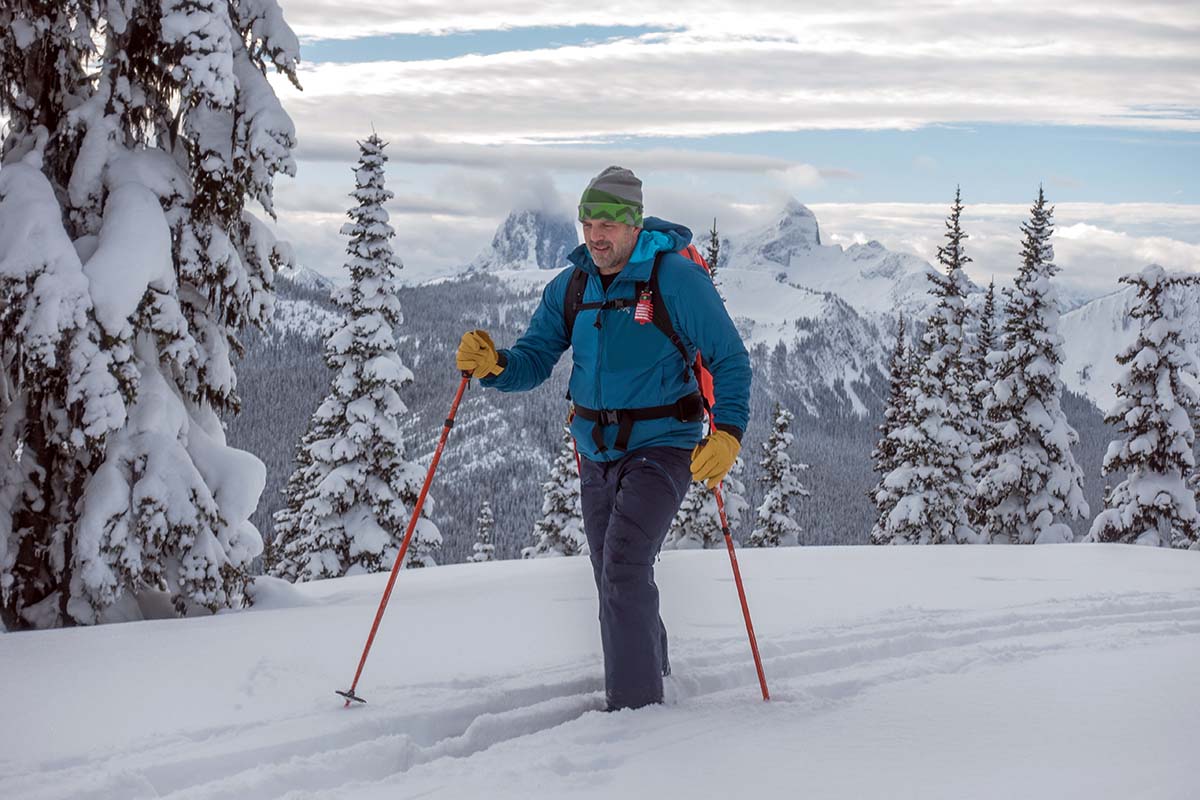
If the purpose for your jacket involves movement (like backcountry touring, cross-country skiing, or snowshoeing), active insulation pieces like the TNF Summit Series Casaval Hybrid and Arc'teryx Proton are great choices. These jackets deftly balance warmth and temperature regulation, and their soft shells keep mobility high. But it should come as no surprise that they are by nature more air-permeable, meaning they don’t trap heat as well as down or down-mimicking synthetic jackets. On the other hand, if you’re aiming for all-out warmth (like the heavyweight Patagonia DAS Parka), expect breathability to suffer.
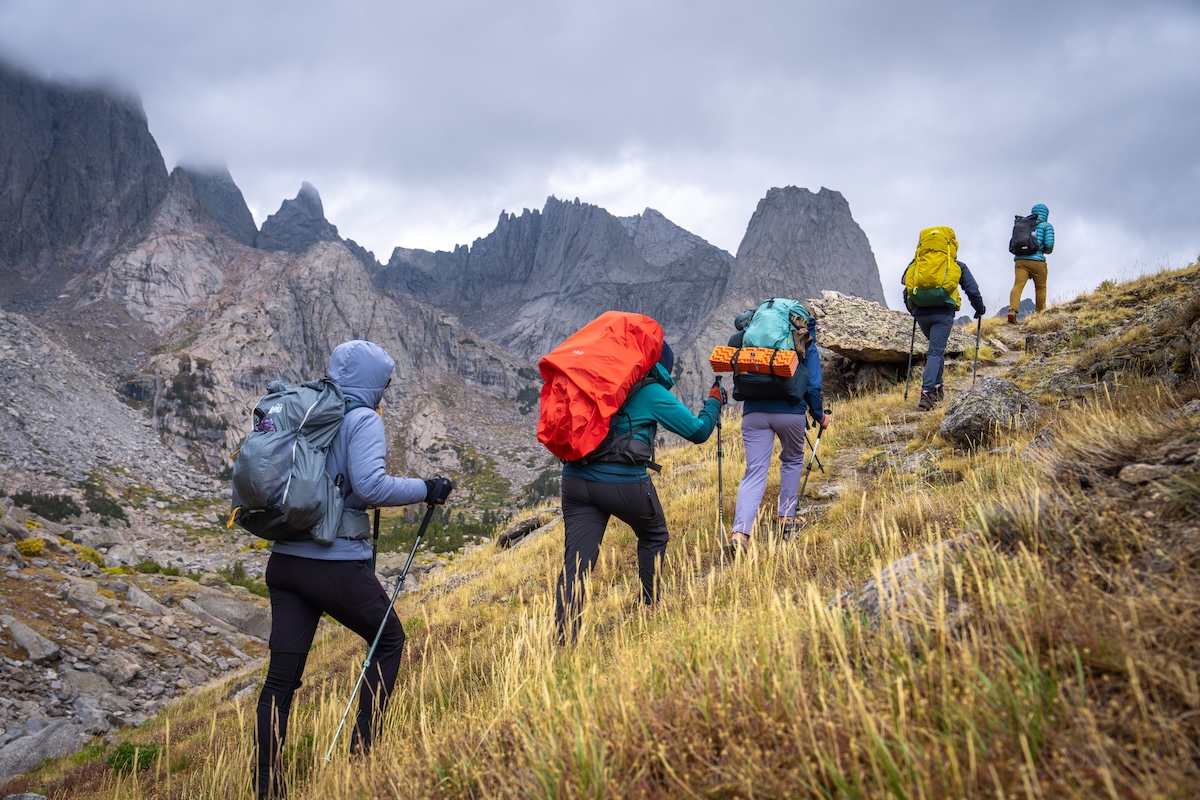
Synthetic insulation doesn’t compress quite as tightly as down, but recent improvements make it more impressive than ever. In general, down-mimicking jackets like the Patagonia Micro Puff and Outdoor Research SuperStrand LT have smaller packed sizes than active pieces like the Arc'teryx Atom, due to the makeup of both the insulation and shell fabrics. Regardless of their packed size, most of the synthetic jackets on this list either pack down into a pocket or come with an included stuff sack. If packability is your highest priority, we still recommend a down jacket, but for casual use and adventuring when space isn’t at an absolute premium, synthetics aren’t far behind.
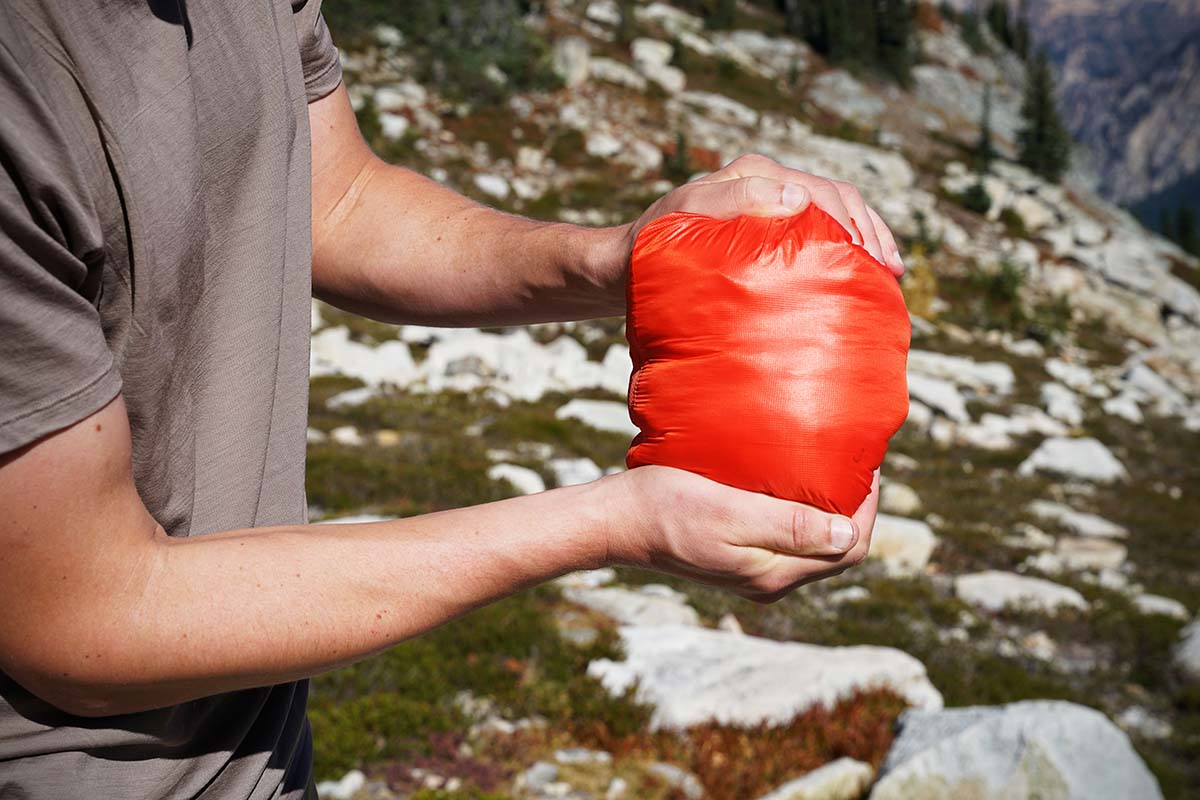
Synthetic jackets are comfortable thanks to their ability to regulate your body temperature. They’re the kind of mid or outer layer that you can wear out in the cold and not have to immediately peel off as you come indoors. The same is true when used as an active piece: You'll find yourself keeping it on for far longer than an equivalent down jacket.
For example, we often put on a jacket like the Arc’teryx Atom or Patagonia Nano-Air when we leave the house and can wear it literally all day. We can walk the dog in 45-degree weather, then move indoors to the office without missing a beat. These synthetics are incredibly comfortable and breathe well enough even for indoor use—you feel like you're wearing your favorite hoody or fleece jacket. If we were to put on a comparable down jacket like the Arc’teryx Cerium, it would be too warm for physical activity or sitting indoors. So although down undoubtedly is warmer, we save it for uses like backpacking when we really value the warmth-to-weight.

Many of our top-ranked synthetic jackets are offered in either a hoody or non-hoody style. What’s best for you will come down to use: we reach for an insulated vest or non-hooded jacket as a midlayer while skiing or around town, and the hoody is great as an outer layer or if it’s really cold. For stop-and-go cold-weather activities like fall hiking, ski touring, or snowshoeing, a hoody is nice to have for keeping you warm while taking a break. Expect to pay $20 to $50 extra for the hoody version of the same piece. A down jacket purchase shares many of the same considerations, and we’ve covered this question in greater detail in the article: Does Your Down Jacket Need a Hood?
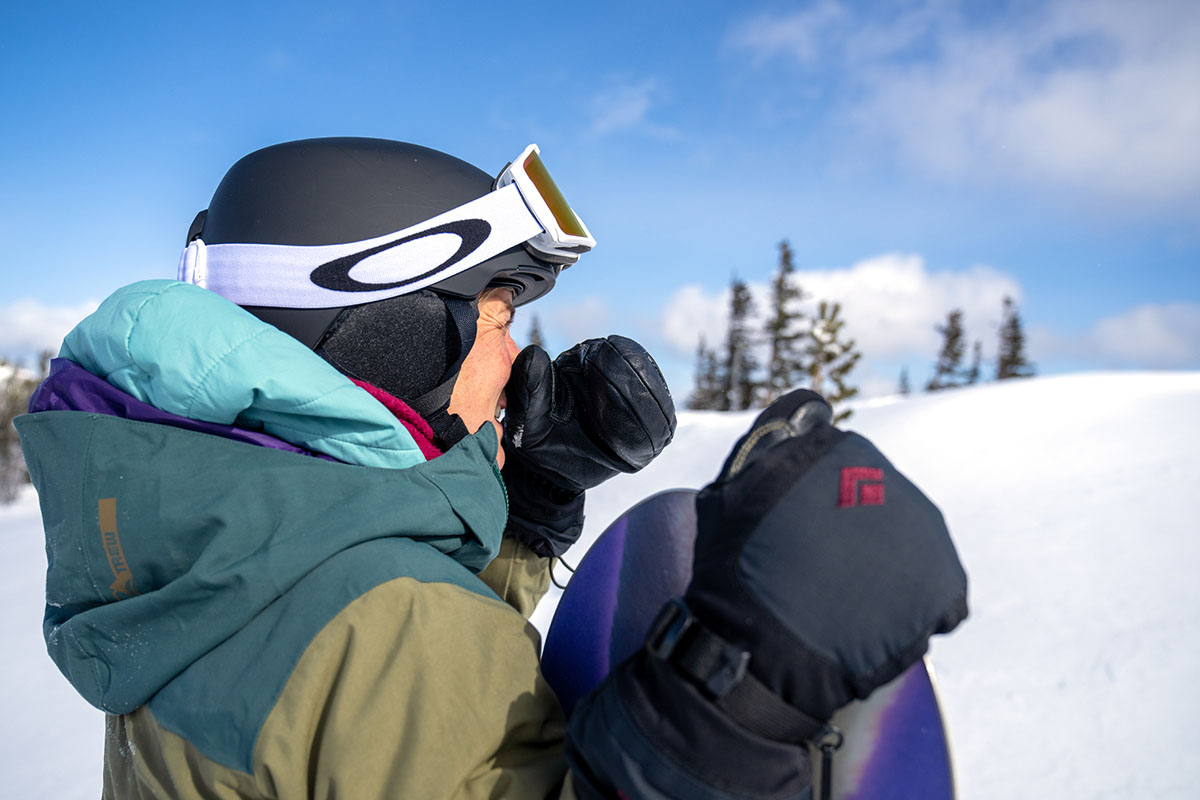
One big selling point of synthetic jackets is that they are easier to care for than down jackets. First, you don’t have to worry as much about moisture, and they don’t lose feathers, meaning that you don’t have to be as vigilant about keeping a close eye on your jacket. Second, many synthetic jackets have relatively thick shells with some built-in stretch (including designs like Patagonia Nano-Air and Black Diamond First Light 2.0 Stretch), which lends great durability for everyday wear. And finally, most synthetic jackets are machine washable and don’t require special supplies and care for cleaning.
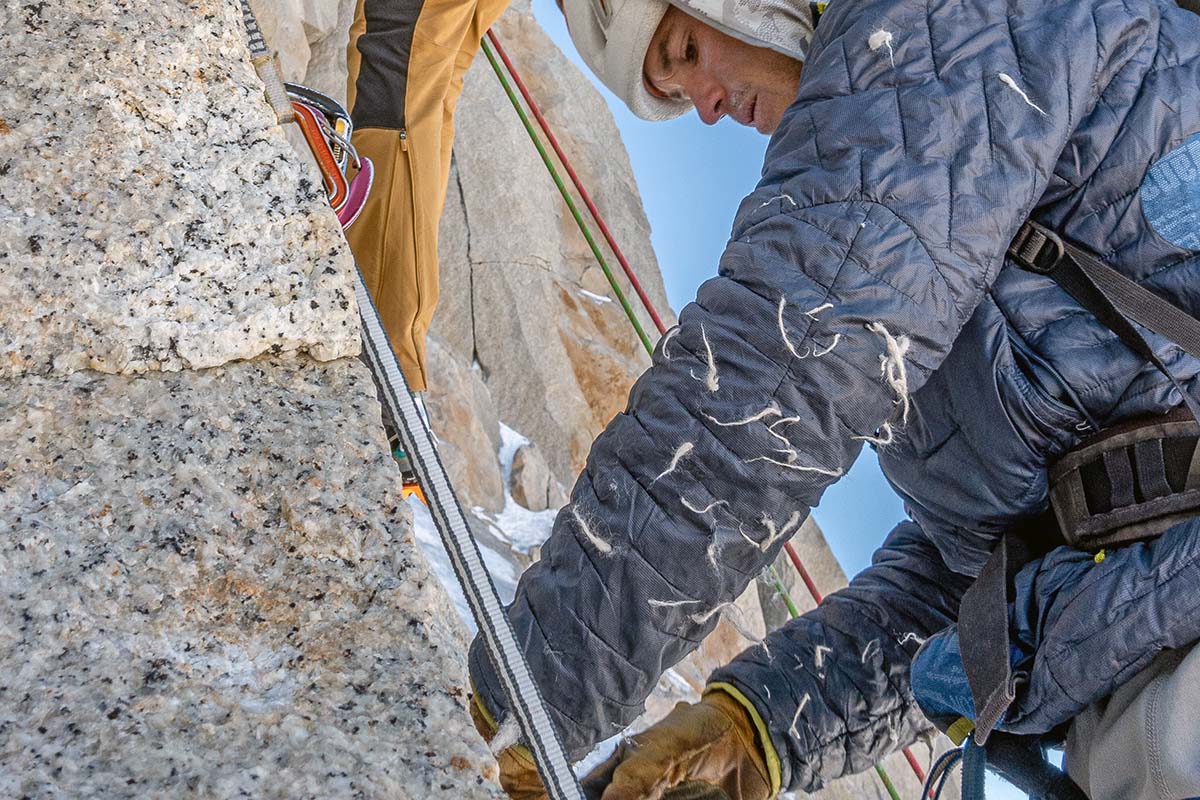
However, it’s important to note that synthetic insulation will break down over time, causing it to lose its loft and ability to trap heat. In this respect, it’s a much less durable product—we have down jackets passed down from our parents that are arguably just as warm today as they were 40 years ago. On the other hand, synthetic jackets certainly have a shorter lifespan and their insulating capabilities will not last throughout generations.
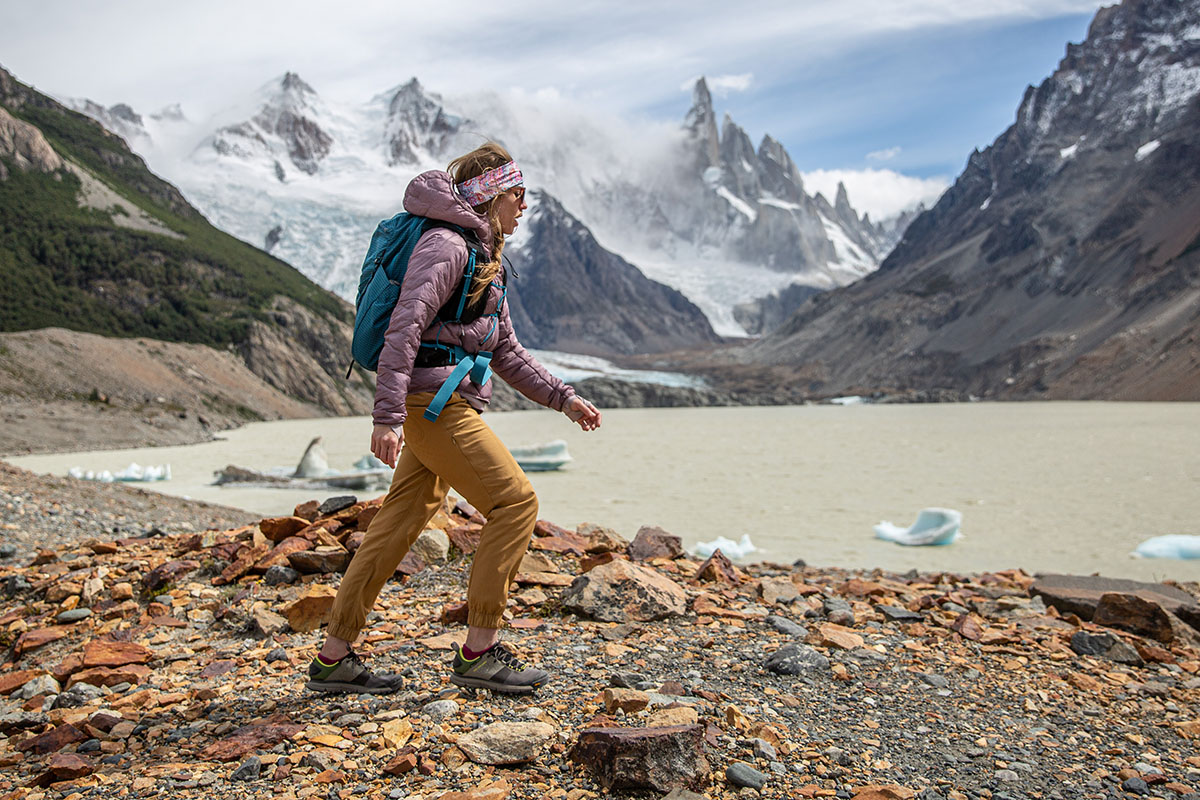
Synthetics have been less scrutinized than down—particularly by animal rights activists—but they have their own set of issues. For one, most are petroleum-based, which results in greenhouse gas emissions and potentially unsafe work environments. Many manufacturers have attempted to make their production more sustainable by using recycled materials, which is a great start (in fact, most jackets here are built primarily with recycled shell materials and fill). To add to the debate, some synthetic fills release micro pieces of plastic into the water during each wash, an issue that is becoming more and more of a global problem. In the end, the most sustainable solution is to buy nothing at all and do what you can to extend the life of what you already own. And if you do make a purchase, we encourage you to be a responsible consumer and choose products made with a sustainable ethos.
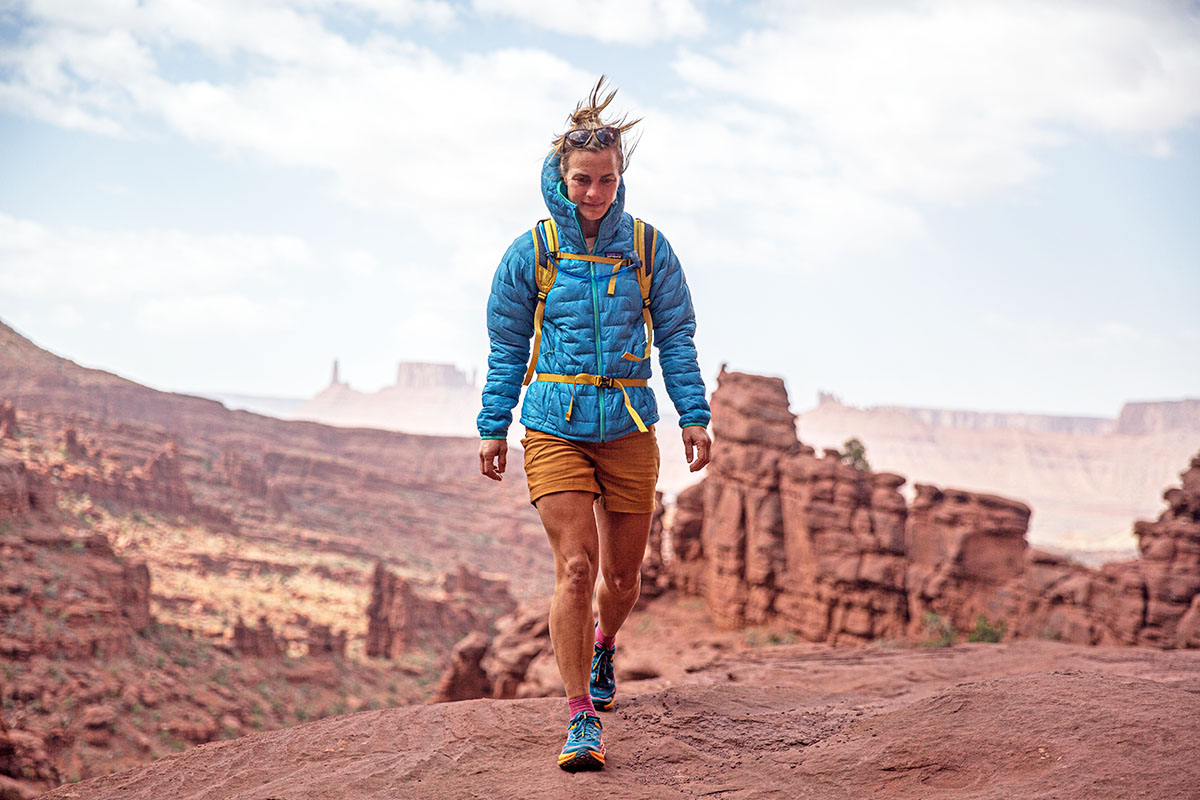
The synthetic jackets on our list span a large price range, from around $150 for the Cotopaxi Teca Cálido to $449 for the winter-weight Patagonia DAS Parka. Jackets on the low end of the spectrum are great for casual use, but don’t expect them to breathe particularly well or pack down small. The $250 to $350 price range is where we see most jackets, including active insulation pieces like the Black Diamond First Light 2.0 Stretch ($349) and down-mimicking designs like the Patagonia Micro Puff ($329). Most synthetic jackets priced at $350 or above will be very specialized, like the aforementioned DAS.
In general, it’s cheaper to produce synthetic insulation than to source down, and this is reflected in the price tag. What’s more, the cost of goose down has been going up, further incentivizing gear manufacturers to come up with new and sustainable down alternatives. Look for the synthetic market to continue to evolve, pushing ever-closer to a true down replacement at a lower cost.
Back to Our Top Synthetic Jacket Picks Back to Our Synthetic Jacket Comparison Table